#Dark Continent: Europe's Twentieth Century
Explore tagged Tumblr posts
Text
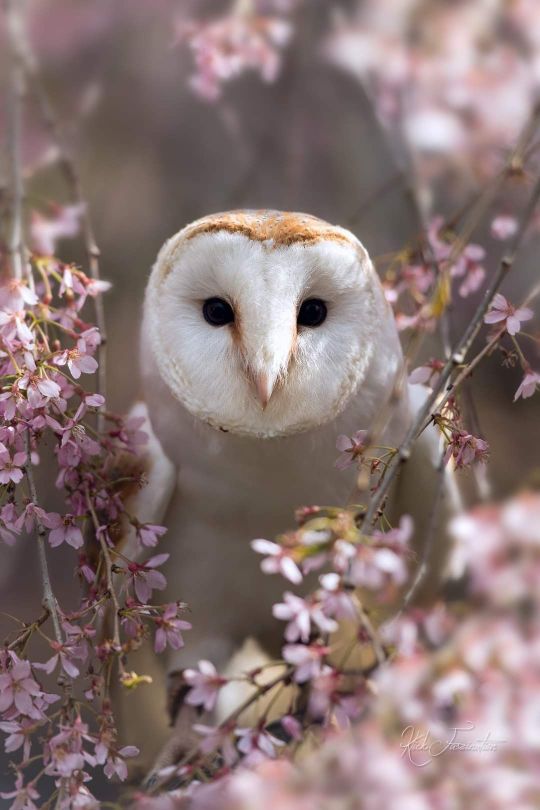
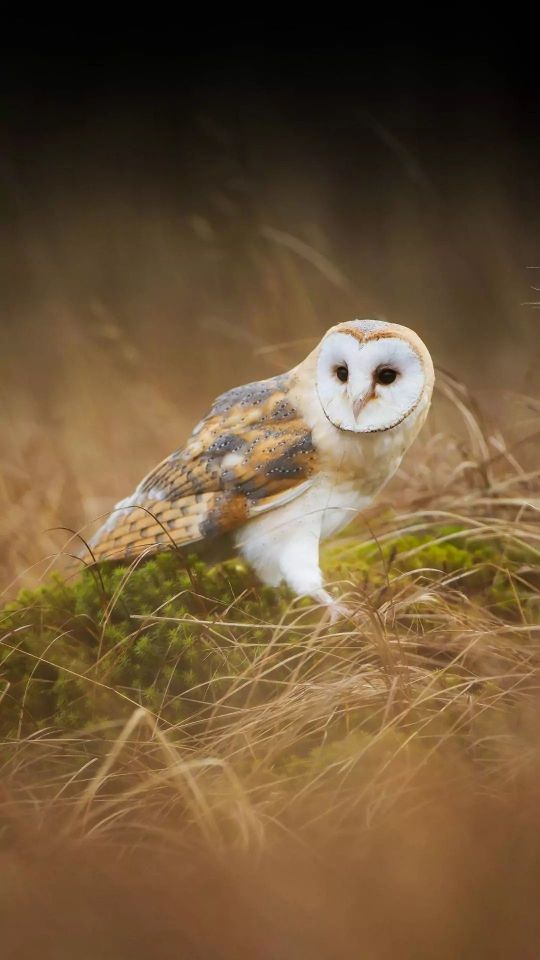
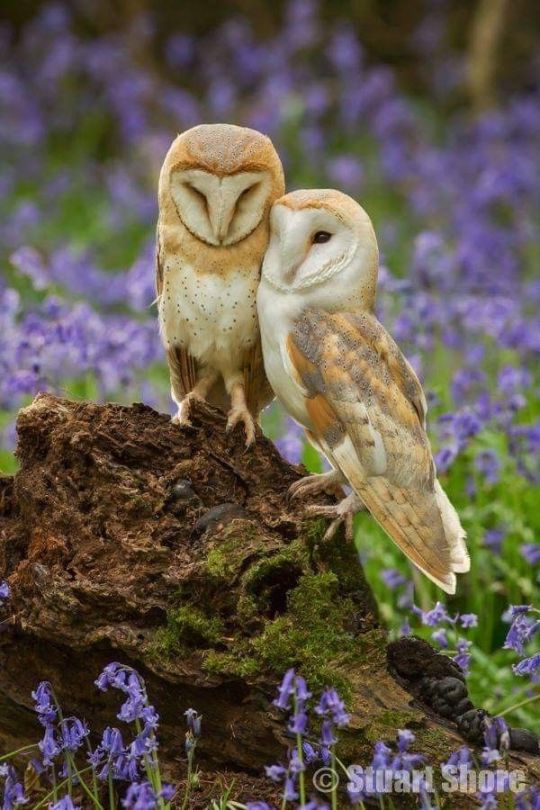
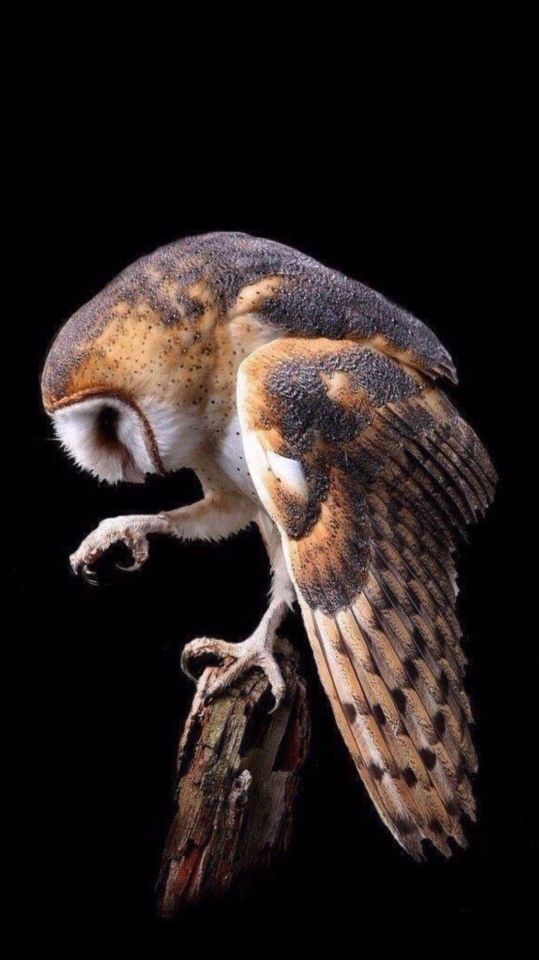
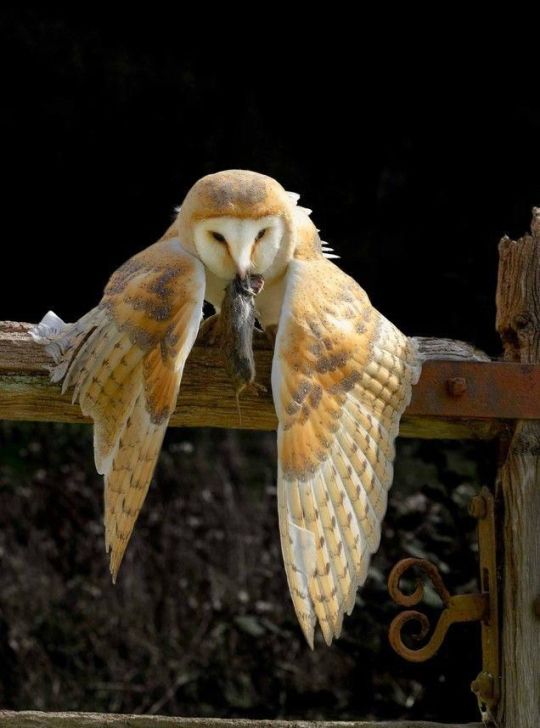
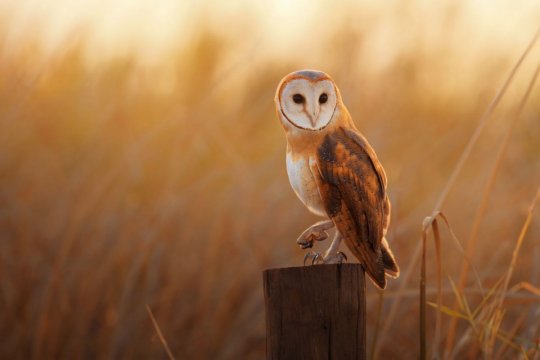
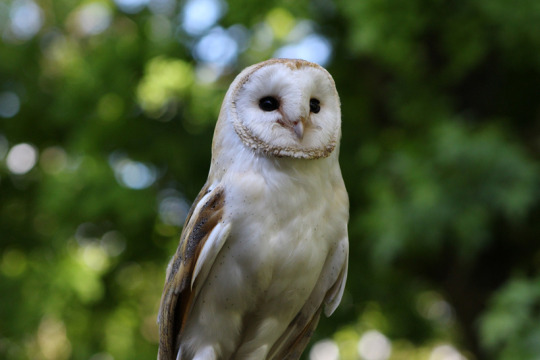

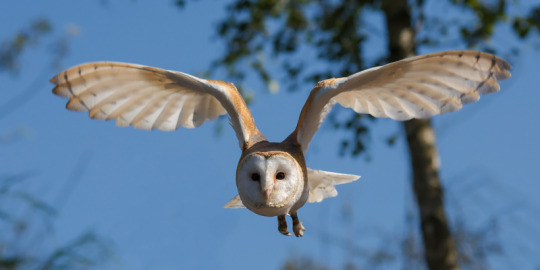
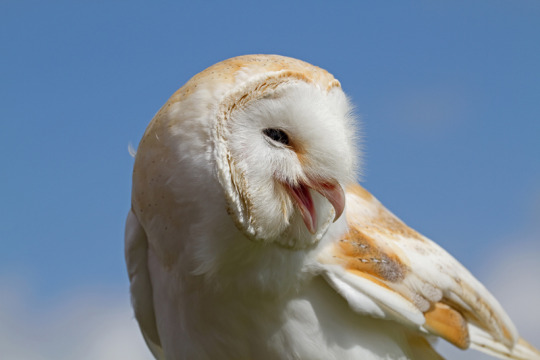

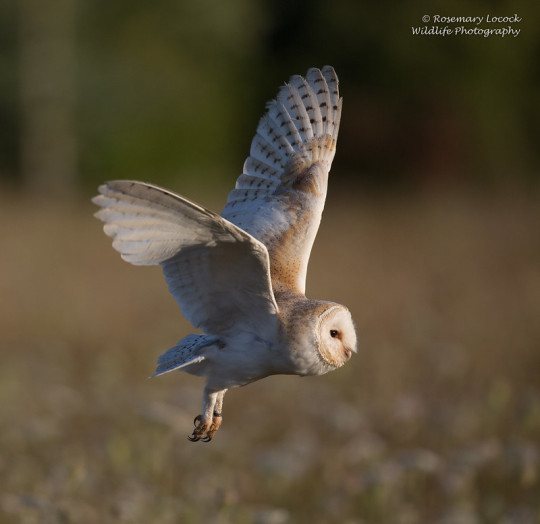
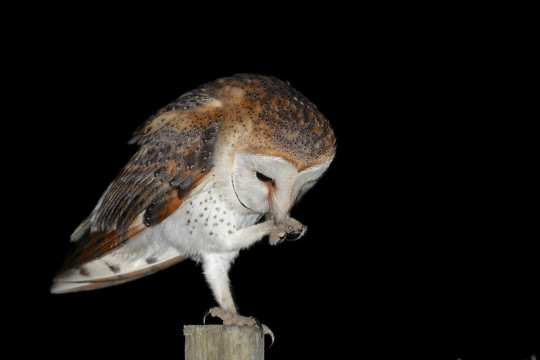
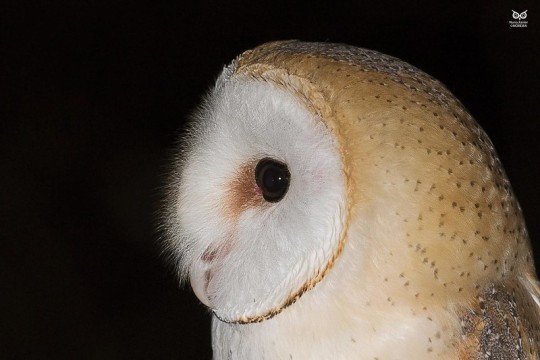
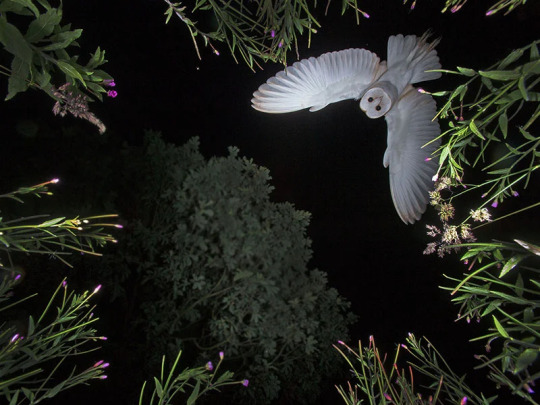

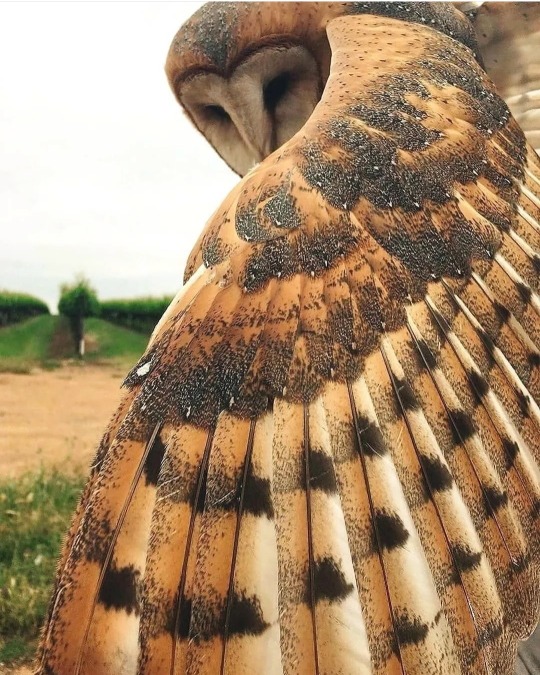
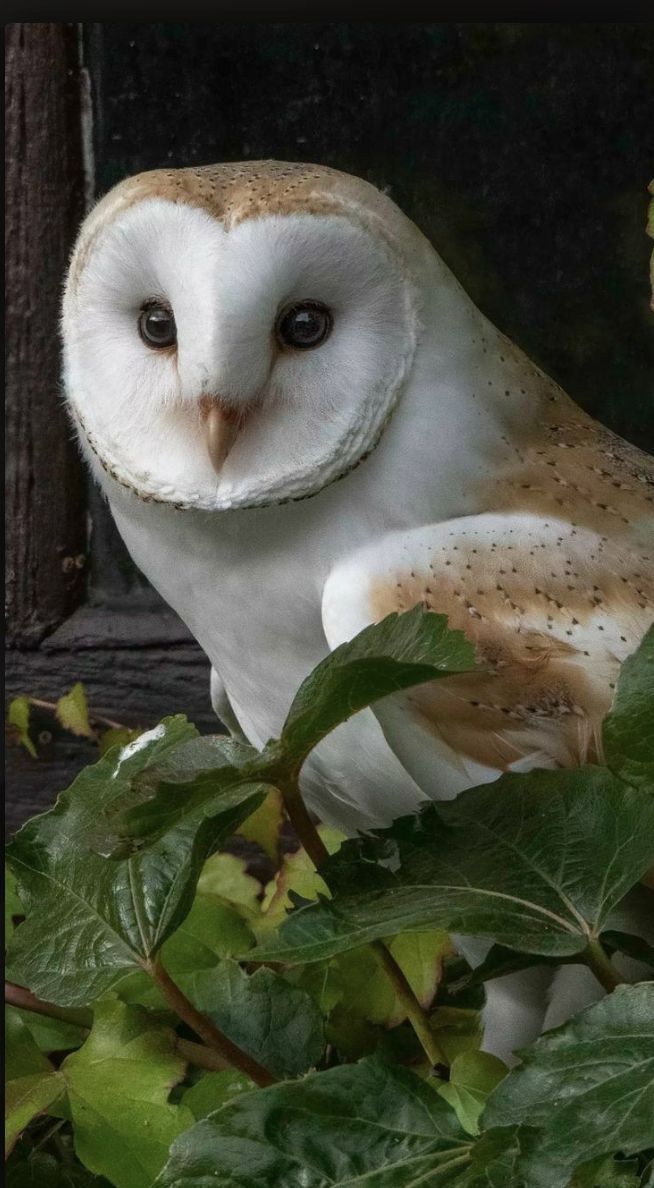

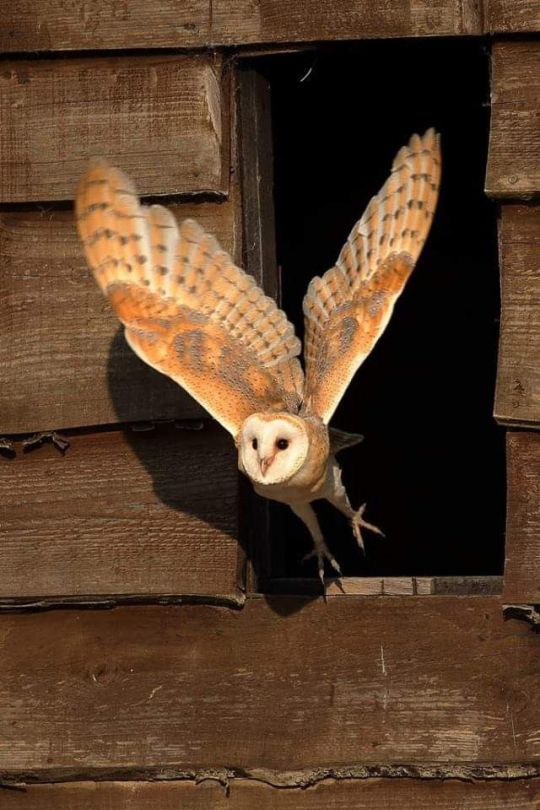
Сипуха - хищная птица среднего размера. Ее габариты весьма скромны: длина тела колеблется в диапазоне от 25 см до 50см, а вес – от 200 до 800 гр. Размах крыльев 85-96 см. У некоторых особей может достигать 110 см. Оперение птиц – пушистое и мягкое.Верхняя часть тела имеет рыжеватый окрас , при этом вся поверхность тела усыпана крапинками. Живот, морда и грудь – белые, зачастую с наличием пятен. Лицевой диск в форме сердца с коричневой каемкой и темные, почти черные глаза. Уши сипухи расположены несимметрично. Левое - на уровне лба, правое - на уровне ноздрей. Сипуха – одна из наиболее широко распространенных птиц земного шара. Она встречается на всех континентах, за исключением Антарктиды, и на многих островах. Однако сипуха не переносит холодного северного и засушливого климатов, поэтому она не встречается в северных регионах Канады, Европы и Азии, а также в районах высокогорий и пустынь. Ее можно увидеть на высотах от 0 до 4000 м. над ур. м. Встречается в самых разных местообитаниях. Сипухи выбирают открытые области, где мало деревьев,вдоль водоемов и на болотах, на пустырях и в оврагах.Иногда сипухи селятся р��дом с автомобильными дорогами. Хорошо приспособлены к жизни рядом с человеком, часто их можно встретить на фермах, в сараях и колокольнях.
Интересные факты о сипухах:
В ХХ веке люди заселили сипухами районы, в которых они раньше не встречались: Галапагосские острова, Гавайи, Сейшельские острова. Целью заселения было избавить эти районы от крыс. Однако на Сейшелах совы начали охотиться не на крыс, а на сейшельскую пустельгу, что привело к резкому сокращению её популяции.
В Англии сипуха прожила в неволе 25 лет.
При приближении человека сипухи начинают раскачиваться и строить гримасы.
Несмотря на то, что сипухи - ночные птицы, иногда они охотятся и днем. Чаще зимой или в период выкармливания птенцов.
Прозвище «призрачная сова» сипуха получила за свою способность резко возникнуть прямо перед лицом ничего не подозревающего человека, не издав при этом ни малейшего звука.
The barn owl is a medium-sized bird of prey. Its dimensions are very modest: its body length ranges from 25 cm to 50 cm, and its weight ranges from 200 to 800 grams. The wingspan is 85-96 cm. In some individuals, it can reach 110 cm. The plumage of birds is fluffy and soft.The upper part of the body has a reddish color, while the entire surface of the body is dotted with specks. The belly, muzzle and chest are white, often with spots. A heart-shaped facial disk with a brown border and dark, almost black eyes. The barn owl's ears are arranged asymmetrically. The left one is at the level of the forehead, the right one is at the level of the nostrils. The barn owl is one of the most widespread birds of the globe. It is found on all continents except Antarctica, and on many islands. However, the barn owl does not tolerate cold northern and arid climates, so it is not found in the northern regions of Canada, Europe and Asia, as well as in areas of highlands and deserts. It can be seen at altitudes from 0 to 4000 m. above the ur. m. It is found in a wide variety of habitats. Barn owls choose open areas where there are few trees, along reservoirs and in swamps, on wastelands and in ravines.Sometimes barn owls settle near highways. They are well adapted to life next to humans, they can often be found on farms, in barns and bell towers. Interesting facts about barn owls: In the twentieth century, people settled barn owls in areas where they had not previously met: the Galapagos Islands, Hawaii, and the Seychelles. The purpose of the settlement was to rid these areas of rats. However, in the Seychelles, owls began to hunt not rats, but the Seychelles kestrel, which led to a sharp decline in its population.
In England, the barn owl lived in captivity for 25 years.
When a person approaches, barn owls begin to sway and make grimaces.
Despite the fact that barn owls are nocturnal birds, sometimes they hunt during the day. More often in winter or during the feeding of chicks.
The barn owl received the nickname "ghost owl" for its ability to abruptly appear right in the face of an unsuspecting person without making the slightest sound.
Источник:/mir-sov.ru/owls/barn-owl, ://zoopark-vl.ru/ zhivotnye /pticzy/sovy/sipuha/, dibird.com/ru/species/sipuha/,://pikabu.ru/tag/Сипуха,://tulazoo.ru/nashi-zhivotnye/ptitsy/sipukha.html,
#nature#nature aesthetic#fauna#wildlife#bird photography#owl#barn owl#Tyto alba#night photos#природа#фауна#фотографии птиц#сова#Сипуха#природнаякрасота#ночные фото
209 notes
·
View notes
Photo

“...Europe may seem to be continent of old states and peoples, yet it is in many respects very new, inventing and reinventing itself over this century through often convulsive political transformation...”
“...This new world of state-sponsored mass murder and cultural extermination gave birth to a new term-introduced for the first time in 1944 in a study of Axis Rule in Occupied Europe by a Polish-Jewish lawyer called Raphael Lempkin...”
“...Thus the numbers of Jewish refugees on the continent continued to increase until 1948 when the creation of the state of Israel and the US Displaced Persons Act allowed most of them to leave Europe. Half a million Palestinian Arab refugees during the 1948 Israeli-Arab War paid the price for Europe’s reluctance to absorb its diminished Jewish population. Europe itself became less central to Jewish life, and the striking intensification of anti-Semitism after 1945 suggested that while the Germans might have carried out the genocide, its socio-economic and cultural repercussions were exploited more widely across the continent...”
...”Consciousness of the nation remains infinitely stronger than a sense of Europe,”wrote Raymond Aron in 1964. The same is true today, and the European Union is therefore likely to remain -in the words of a Belgian diplomat-”an economic giant, a political dwarf and a military worm.”
1 note
·
View note
Text
Before We Disappear book review
Spoiler-y review of Before We Disappear by Shaun David Hutchinson
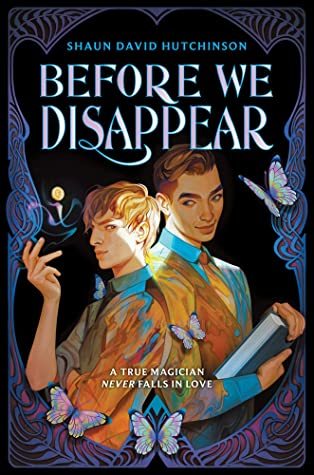
Summary (pulled from goodreads) :
The Prestige meets What If It’s Us in Before We Disappear, a queer ahistorical fantasy set during the 1909 Seattle Alaska–Yukon–Pacific Exposition, where the two assistants of two ambitious magicians find themselves falling in love amidst a bitter rivalry designed to tear them apart.
Jack Nevin’s clever trickery and moral flexibility have served him well his entire life—making him the perfect assistant to the Enchantress, one of the most well-known stage magicians in early-twentieth-century Europe. Without Jack’s steady supply of stolen tricks and copycat sleight-of-hand illusions, the Enchantress’s fame would have burned out long ago—not that she would ever admit it.
But when they’re forced to flee the continent for America, the Enchantress finds a new audience in Seattle at the 1909 Alaska–Yukon–Pacific World’s Fair Exposition. She and Jack are set to make a fortune until a new magician arrives on the scene. Performing tricks that defy the imagination, Laszlo’s act threatens to overshadow the Enchantress and co-opt her audience. Jack has no choice but to hunt for the secrets behind Laszlo’s otherworldly illusions—but what he uncovers isn’t at all what he expected.
What makes Laszlo’s tricks possible is, unbelievably, a boy that can seemingly perform real magic. Wilhelm’s abilities defy all the laws of physics. His talents are no clever sleights-of-hand. But even though Laszlo and Wilhelm’s act threatens to destroy the life Jack and the Enchantress have built, Jack and Wilhelm have near-instant connection. As the rivalry between the Enchantress and Laszlo grows increasingly dangerous and dire, Jack finds he has to choose between the woman who gave him a life and the boy who is offering him love. It's a new star-crossed romance about the magic of first love from acclaimed author Shaun David Hutchinson.
Review:
This was an incredible adventure to read. Looking at the cover and thinking it was teen or at least YA, I was unprepared for how dark it got. Our main characters are both living in abusive relationships. The theme of abuse is a strong one and is quite heavy. I think it did a good job of showing different types of abuse and the victims' reactions to it.
There was also a theme of found family and figuring out what you want in your future, freedom, and finding a home in the person you love. Both our characters go through great arcs where they learn and grow. Watching them connect, protect, love, and understand each other was delightful with an undercurrent of unease because they are unsafe and in danger.
Honestly I didn't think it would end in anything but tragedy but I was glad to be wrong. Given how heavy and tense the story was, the ending went smoothly without any problems which I feel like was an opportunity missed. With a story like this, I think the last act should have also been tense, messy, and scary. But I guess given how much hell our characters went through, they at least deserved an easy end.
I spent the entire book terrified of them getting caught or getting hurt or any other horrible things and so I think it was expertly written. I felt all the emotions of the characters and thats why I was so on edge most of the time. It was super easy to just fly through the book, I think I read it in 2 sittings. The author is great at evoking emotion in readers which was true with this book and his other book I previously reviewed, We Are The Ants.
What I loved was that the concept of homophobia was completely taken out. Our main characters are 2 gay men and our side characters are 2 sapphic women, both who get together romantically. The author makes a note of it in the end acknowledgement that it's a fantasy because homophobia existed in real life of course but a fantasy gave him full control to get rid of it in his story. What was not gotten rid of was the period typical racism and sexism but I guess nothing can be perfect, humans and their bigotry will remain no matter what. Racism and sexism also played a role in the story so there was that as well.
The villains of the story were interesting. One was terrifying and the other charming and enchanting. Teddy, the terrifying one, was physically abusive and a monster, and there was no humanity in him. In that regard maybe he was a bit stereotypical and one dimensional but I know monsters like him exist. My only issue was a line towards the end that tried to humanize him by saying he was someone who's bad decisions made him a monster and implying he may have been good before but not once do we see him do one good or even a neutral deed so that line kinda fell flat.
The enchanting one, appropriately named The Enchantress, was emotionally abusive, narcissistic, and manipulative. Yet she had more to her character than Teddy. She felt real. There was a complexness to her. We do see her do some good and very much bad and it makes her a believable character and a great villain. I was less afraid of her than Teddy even though her cunning would definitely make her more dangerous, since you would never see her coming. Teddy was dumb but physically dangerous. When the novel starts, we are told that The Enchantress captivates everyone and easily makes them like her and I found that to be (annoyingly) true. You can't help but like her or be charmed by her even though you see how much of a horrible person she is. To me, she was the most interesting and the most complex character in the novel.
Overall I think I loved this novel more than We Are The Ants.
#book review#before we disappear#shaun david hutchinson#books and reading#bookblr#booklr#books#writing portfolio#my writing#my reviews#fantasy novel#lgbt#mlm books#wlw side romance#sapphic#diverse cast#disability rep#no homophobia
24 notes
·
View notes
Text
here’s my giant leftist to-read list for the next few years!!!
if a little (done!) it written next to the book, it means i’ve finished it! i’m gonna try to update this as i read but no promises on remembering haha
Economics/Politics
Property by Karl Marx
Communist Manifesto by Karl Marx (done!)
Wages, Price, and Profit by Karl Marx (done!)
Wage-Labor and Capital by Karl Marx (done!)
Capital Volume I by Karl Marx
The 1844 Manuscripts by Karl Marx
Socialism: Utopian and Scientific by Fredrich Engles
Synopsis of Capital by Fredrich Engels
The Principles of Communism by Fredrich Engles
Imperialism, The Highest Stage Of Capitalism by Vladmir Lenin
The State And Revolution by Vladmir Lenin
The Revolution Betrayed by Leon Trotsky
Fascism: What is it and How to Fight it by Leon Trotsky
In Defense Of Marxism by Leon Trotsky
The Accumulation of Capital by Rosa Luxemborg
Reform or Revolution by Rosa Luxemburg
Discipline and Punish by Michel Foucault
The Conquest of Bread by Peter Kropotkin
On Anarchism by Noam Chomsky
Profit over People by Noam Chomsky
An Introduction to Marxist Economic Theory by Ernest Mandel
The Affluent Society by John Kenneth Galbraith
The Postmodern Condition by Jean François Lyotard
Capitalist Realism by Mark Fisher
The Socialist Reconstruction of Society by Daniel De Leon
Anarchism and Other Essays by Emma Goldman
Socialism Made Easy by James Connolly
Race
Biased: Uncover in the Hidden Prejudice That Shapes What We See, Think, and Do
Blindspot by Mahzarin R. Banaji
Racism Without Racists: Color-blind Racism And The Persistence Of Racial Inequality In America by Eduardo Bonilla-Silva
How To Be Less Stupid About Race: On Racism, White Supremacy And The Racial Divide by Crystal M. Flemming
This Book is Anti-Racist: 20 Lessons on How To Wake Up, Take Action, And Do The Work by Tiffany Jewell & Aurelia Durand
The Next American Revolution: Sustainable Activism For The Twenty-First Century by Grace Lee Boggs
Tell Me Who You Are by Winona Guo & Priya Vulchi
The Fire This Time: A New Generation Speaks About Race by Jesymn Ward
Class, Race, and Marxism by David R. Roediger
America for Americans: A History Of Xenophobia In The United States by Erica Lee
The Politics Of The Veil by Joan Wallach Scott
A Different Mirror A History Of Multicultural America by Ronald Takaki
A People’s History Of The United States by Howard Zinn
Black Theory
The Wretched Of The World by Frantz Fanon
Black Marxism by Cedric J Robinson
Malcolm X Speaks by Malcolm X
Women, Culture, and Politics by Angela Davis
Women, Race, & Class by Angela Davis (done!)
Freedom is a Constant Struggle by Angela Davis (done!)
The Meaning of Freedom by Angela Davis
Sister Outsider by Audre Lorde
Ain’t I A Woman? by Bell Hooks
Yearning by Bell Hooks
Dora Santana’s Works
An End To The Neglect Of The Problems Of The Negro Women by Claudia Jones
I Am Your Sister by Audre Lorde
Women’s Liberation And The African Freedom Struggle by Thomas Sankara
W.E.B. DuBois Essay Collection
Black Reconstruction by W.E.B. DuBois
Lynch Law by Ida B. Wells
The Bluest Eye by Toni Morrison
Sula by Toni Morrison
Song Of Solomon by Toni Morrison
Beloved by Toni Morrison
Paradise by Toni Morrison
A Mercy by Toni Morrison
This Bridge Called My Back by Cherríe Moraga
Stamped from the Beginning: The Definitive History of Racist Ideas in America
So You Want to Talk About Race by Ijeoma Oluo
The New Jim Crow: Mass Incarceration in the Age of Colorblindness by Michelle Alexander
Black Feminist Thought by Patricia Hill Collins
Eloquent Rage: A Black Feminist Discovers Her Superpower by Dr. Brittney Cooper
I Know Why the Caged Bird Sings by Maya Angelou
Black Skins, White Masks and The Wretched of the Earth by Frantz Fanon
Killing of the Black Body
Revolutionary Suicide by Huey P Newton
Settlers; The myth of the White Proletariat
Fearing The Black Body; The Racial Origins of Fatphobia
Freedom Dreams; The Black Radical Imagination
How Capitalism Underdeveloped Black America
How Europe Underdeveloped Africa
An Argument For Black Women’s Liberation As a Revolutionary Force by Mary Anne Weathers
Voices of Feminism Oral History Project by Frances Beal
Ghosts In The Schoolyard: Racism And School Closings On Chicago’s South Side by Eve L. Ewing
Tears We Cannot Stop: A Sermon To White America by Michael Eric Dyson
Why We Can’t Wait by Martin Luther King, Jr.
Fatal Invention: How Science, Politics, Big Business, Re-create Race In The 21st Century by Dorothy Roberts
We Gon’ Be Alright: Notes on Race & Resegregation by Jeff Chang
They Can’t Kill Us All: Ferguson, Baltimore, and a New Era In America’s Racial Justice Movement by Wesley Lowery
The Common Wind by Julius S. Scott
Black Is The Body: Stories From My Grandmother’s Time, My Mother’s Time, And Mine by Emily Bernard
We Were Eight Years In Power: An American Tragedy by Ta-Nehisi Coates
American Lynching by Ashraf H. A. Rushdy
Raising Our Hands by Jenna Arnold
Redefining Realness by Janet Mock
When Affirmative Action Was White: An Untold History of Racial Inequality in Twentieth-Century America by Ira Katznelson
Whistling Vivaldi: How Stereotypes Affects Us and What We Can Do
Citizen: An American Lyric by Claudia Rankine
Left of Karl Marx: The Political Life Of Black Communist Claudia Jones by Carole Boyce Davies
Black Studies Manifesto by Darlene Clark
The Hate U Give by Angie Thomas
The Souls Of Black Folk by W.E.B. Du Bois
Darkwater by W.E.B. Du Bois
The Education Of Blacks In The South, 1860-1935 by James D. Anderson
The Half Has Never Been Told: Slavery And The Making Of American Capitalism by Edward E. Baptist
The Color Of Money: Black Banks And The Racial Wealth Gap by Mehrsa Baradaran
A Black Women’s History Of The United States by Daina Ramey Berry & Kali Nicole Gross
The Price For Their Pound Of Flesh: The Value Of The Enslaved, From Womb to Grave, In The Building Of A Nation by Daina Ramey Berry
North Of Slavery: The Negro In The Free States, 1780-1869 by Leon F. Litwack
Black Stats: African Americans By The Numbers In The Twenty-First Century by Monique M. Morris
Pushout: The Criminalization of Black Girls in Schools by Monique M. Morris
40 Million Dollar Slaves: The Rise, Fall, And Redemption of The Black Athlete by William C. Rhoden
From #BlackLivesMatter To Black Liberation by Keeanga-Yamahtta Taylor
A More Beautiful And Terrible History: The Uses And Misuses Of Civil Rights History by Jeanne Theoharis
Medical Apartheid: The Dark History Of Medical Experimentation On Black Americans From Colonial Times To The Present by Harriet A. Washington
Working At The Intersections: A Black Feminist Disability Framework” by Moya Bailey
Theory by Dionne Brand
Black Women, Writing, And Identity by Carole Boyce Davies
Slavery By Another Name: The Re-enslavement Of Black Americans From The Civil War To World War II by Douglass A. Blackmon
Black Like Me by John Howard Griffin
The Fire Next Time by James Baldwin
Some Of Us Are Very Hungry Now by Andre Perry
The Origins Of The Urban Crisis: Race and Inequality In Postwar Detroit by Thomas Surgue
They Can’t Kill Us Until They Kill Us by Hanif Abdurraqib
Beyond Containment: Autobiographical Reflections, Essays and Poems by Claudia Jones
The Black Woman: An Anthology by Toni McCade
Double Jeopardy: To Be Black and Female by Frances Beal
How We Get Free: Black Feminism and the Combahee River Collective by Keeanga-Yamahtta Taylor
Indigenous Theory
Colonize This! by Daisy Hernandez and Bushra Rehman
As We Have Always Done
Braiding Sweetgrass
Spaces Between Us
The Sacred Hoop by Paula Gunn Allen
Native: Identity, Belonging, And Rediscovering God by Kaitlin Curtice
An Indigenous People’s History Of The United States by Roxanne Dunbar-Ortiz
Why Indigenous Literatures Matter by Daniel Heath Justice
Highway of Tears: A True Story of Racism, Indifference, And The Pursuit Of Justice For Missing And Murdered Indigenous Women and Girls by Jessica McDiarmid
The Other Slavery by Andrés Reséndez
Seven Fallen Feathers by Tanya Talaga
All Our Relations: Indigenous Trauma In The Shadow Of Colonialism by Tanya Talaga
All Our Relations: Finding The Path Forward by Tanya Talaga
Everything You Wanted To Know About Indians But Were Afraid To Ask by Anton Treuer
Rez Life: An Indian’s Journey Through Reservation Life by David Treuer
Latine Theory
Borderlands/La Frontera by Gloria Anzaldúa
Open Veins of Latin America: Five Centuries of Pillage of A Continent by Eduardo Galeano
Inventing Latinos: A New Story of American Racism by Laura E. Gomez
De Colores Means All Of Us by Elizabeth Martinez
Middle Eastern And Muslim Theory
How Does It Feel To Be A Problem? Being Young And Arab In America by Moustafa Bayoumi
We Too Sing America: South Asian, Arab, Muslim, and Sikh Immigrants Shape Our Multiracial Future by Deepa Iyer
Alligator and Other Stories by Dima Alzayat
API Theory
Orientalism by Edward Said
The Making Of Asian America by Erika Lee
On Gold Mountain by Lisa See
Strangers From A Different Shore: A History of Asian Americans by Ronald Takaki
They Called Us Enemy (Graphic Novel) by George Takei
Yellow Peril!: An Archive of Anti-Asian Fear by Edited by John Kuo Wei Tchen and Dylan Yeats
Yellow: Race In America Beyond Black And White by Frank H. Wu
Alien Nation: Chinese Migration In The Americas From The Coolie Era Through World War II by Elliott Young
The Good Immigrants: How The Yellow Peril Became The Model Minorities by Madeline H. Ysu
Asian American Dreams: The Emergence Of An American People by Helen Zia
The Myth Of The Model Minority: Asian Americans Facing Racism by Rosalind S. Chou & Joe R. Feagin
Two Faces Of Exclusion: The Untold Story Of Anti-Asian Racism In The United States by Lon Kurashige
Whiteness
White Fragility by Robin Di Angelo (done!)
White Kids: Growing Up With Privilege In A Racially Divided America by Margaret A. Hagerman
Waking Up White by Deby Irving
The History of White People by Nell Irvin Painter
White Like Me: Reflections On Race From A Privileged Son by Tim Wise
White Rage by Carol Anderson
What Does It Mean To Be White: Developing White Racial Literacy by Robin DiAngelo
The Invention of The White Race: Volume 1: Racial Oppression and Social Control by Theodore W. Allen
The Invention of The White Race: Volume 2: The Origin of Racial Oppression in Anglo-America by Theodore W. Allen
Immigration
Call Me American by Abdi Nor Iftir
Create Dangerously: The Immigrant Artist At Work by Edwidge Danticat
My Family Divided by Diane Guerrero
The Devil’s Highway: A True Story by Luis Alberto Urrea
The Undocumented Americans by Karla Cornejo Villavicencio
Enrique’s Journey by Sonia Nazario
Tell Me How It Ends: An Essay In Forty Questions by Valeria Luiselli
Voter Suppression
One Person, No Vote: How Voter Suppression Is Destroying Our Democracy by Carol Anderson
Give Us The Vote: The Modern Struggle For Voting Rights In America by Ari Berman
Prison Abolition And Police Violence
Abolition Democracy by Angela Davis
Are Prisons Obsolete? by Angela Davis
The Prison Industrial Complex by Angela Davis
Political Prisoners, Prisons, And Black Liberation by Angela Davis
Just Mercy by Bryan Stevenson (done!)
The End Of Policing by Alex S Vitale
Invisible No More: Police Violence Against Black Women and Women of Color by Andrea J. Ritchie
Choke Hold: Policing Black Men by Paul Butler
From The War On Poverty To The War On Crime: The Making Of Mass Incarceration In America by Elizabeth Hinton
Feminist Theory
The Second Sex by Simone de Beauvoir
A Vindication of the Rights of Women by Mary Wollstonecraft
Bad Feminist by Roxanne Gay
7 Feminist And Gender Theories
Race, Gender, And Class by Margaret L. Anderson
African Gender Studies by Oyèrónkẹ́ Oyěwùmí
The Invention Of Women by Oyèrónkẹ́ Oyěwùmí
What Gender Is Motherhood? by Oyèrónkẹ́ Oyěwùmí
Feminism Without Borders: Decolonizing Theory, Practicing Solidarity by Chandra Talpade Mohanty
I Am Malala by Malala Youssef
LGBT Theory
Gender Trouble by Judith Butler
Performative Acts and Gender Constitution by Judith Butler
Imitation and Gender Insubordination by Judith Butler
Bodies That Matter by Judith Butler
Excitable Speech by Judith Butler
Undoing Gender by Judith Butler
The Roots Of Lesbian And Gay Opression: A Marxist View by Bob McCubbin
Compulsory Heterosexuality And Lesbian Existence by Adrienne Rich
Decolonizing Trans/Gender 101 by B. Binohan
Gay.Inc: The Nonprofitization of Queer Politics by Merl Beam
Pronouns Good or Bad: Attitudes and Relationships with Gendered Pronouns
Transgender Warriors
Whipping Girl; A Transsexual Woman on Sexism and the Scapegoating of Femininity
Stone Butch Blues by Lesie Feinberg (done!)
The Stonewall Reader by Edmund White
Sissy by Jacob Tobia
Gender Outlaw by Kate Bornstein
Butch Queens Up In Pumps by Marlon M. Bailey
Black On Both Sides: A Racial History Of Trans Identities by C Riley Snorton
Go Tell It On The Mountain by James Baldwin
Ezili’s Mirrors: Imagining Black Queer Genders by Omise’eke Natasha Tinsley
Lavender and Red by Emily K. Hobson
152 notes
·
View notes
Text
Updated Reading List 5: European History
Historiography, Theory, Methodology, Construction, and Philosophy of History American History Ancient History Atlantic World History
European History (476 CE through WW2, basically)
Life in the Third Reich edited by Richard Bessel
Nazism and War (Modern Library Chronicles) by Richard Bessel
Aristocratic Women in Medieval France (The Middle Ages Series) edited by Theodore Evergates
Theodosian Empresses: Women and Imperial Dominion in Late Antiquity (Transformation of the Classical Heritage) by Kenneth Holum
To Hell and Back: Europe 1914-1949 by Ian Kershaw
Dark Continent: Europe's Twentieth Century by Mark Mazower
Hitler's Empire: How the Nazis Ruled Europe by Mark Mazower
The World of the Troubadours: Medieval Occitan Society, c.1100-c.1300 by Linda M. Paterson
The Weimar Republic: The Crisis of Classical Modernity by Detlev J. K. Peukert
Bloodlands: Europe Between Hitler and Stalin by Timothy Snyder [NOTE: this book is OUTSTANDING but also very intense and disturbing; it’s about how Hitler and Stalin murdered millions of civilians between them as a matter of policy, 1933-1945. It opens with toddlers cannibalizing each other during the Holodomor. That really sets the tone. It’s honestly not for beginners (so to speak) and can make for a traumatic read if you’re not Ready.]
The Unfree French: Life Under the Occupation by Richard Vinen
The Inheritance of Rome: Illuminating the Dark Ages 400-1000 by Chris Wickham [I FUCKING LOVE THIS BOOK IT IS WRITTEN SO WELL AND IS JUST OUTSTANDING. Like my mom is smart af and loves history, but she has zero patience for academic prose. This book tho. Bitch stole my copy.]
NOTE: I’m an Amazon Affiliate; I will receive a small portion of the proceeds from ANYTHING [hint] you purchase on Amazon via my links. I am an independent scholar, and need $$$ to pay my translators etc for my book on Jewish women’s Holocaust resistance, so anything you can do helps! If you’d rather not give your $$$ to Amazon but still want to help this independent scholar out, my paypal is here.
85 notes
·
View notes
Note
Hi there, I really liked what you had to say about the upcoming election. I was wondering if you have published any articles recently in regards to that? I know you said you were a historian.
Aha, thank you so much, this is very flattering. Alas (?), the book that I have just published is about the crusades, as I am a medieval historian by training. However, one of my main research interests is the role of the “imagined medieval” in modern culture, I have written a book chapter about the role of the crusades in post-9/11 political and cultural rhetoric, and I am developing a research project that examines the current crisis of public history through a medievalist perspective. That, however, is still in draft stages.
That said, I absolutely DO have a mini reading list for you (and a lecture to go with it, because as noted, I am an academic and this is how we function!) The topic of today’s class is “Why Accelerationist Ideology Is And Always Has Been Horrifically Racist and Genocidal Throughout History, and White Americans Only Like It Because They Don’t Live In Countries Where It Was Done (By America).” Not very snappy, but there you have it.
The reading list, to start off, is:
The Cold War: A World History by Odd Arne Westad
The Shock Doctrine: The Rise of Disaster Capitalism by Naomi Klein
The Silk Roads: A New History of the World by Peter Frankopan
Stamped from the Beginning: The Definitive History of Racist Ideas in America by Ibram X. Kendi
Drift: The Unmooring of American Military Power by Rachel Maddow
The Bridge Betrayed: Religion and Genocide in Bosnia by Michael Sells
These are all hefty books (though the Maddow and Sells books are shorter) but they’re accessible and written for the layperson, and we always have time to educate ourselves. Why are they relevant to the 2020 election, you might ask?
First: the Cold War book lays out in great, GREAT detail the consequences of a global world order absolutely gripped by a competing standoff of ideologies (American capitalism vs. Soviet socialism) and how these two forces gulped up the politics of the rest of the world, destroyed numerous satellite states, and tried to rebuild them from the ashes into new ideological utopias -- precisely what a lot of people are suggesting now with the ridiculous “just burn everything down and it will magically fix itself!” theory that is somehow presented as the Moral Alternative to voting for Biden/Harris. You know what this caused during the Cold War? Yep. Human suffering on a massive scale, and absolutely zero utopian perfect states, whether capitalist or socialist. It also makes the extremely salient point that in the 1930s, German leftists and liberal democrats were infighting among themselves as to who was Less Morally Pure, and couldn’t agree on a candidate or a moral imperative to oppose the other guy, and figured that their flawed liberal idealists were “just as bad” as said other guy. Was that guy’s name Adolf Hitler? Why yes. Yes it was. Is there a lesson here for us? Who can say. Seems hard to figure.
Leaving aside the tragedy and pointlessness of the Korean and Vietnam Wars, both fought as proxy battlefields between Americans and Soviets, let’s consider the Great Leap Forward, in China (1958-1962) under Chairman Mao Zhedong. The idea was to dismantle traditionalist Confucian Chinese society and rebuild it as a modern socialist state, which was the goal of a lot of twentieth-century old-school socialist/Marxist “people’s republics.” Mao took this exact “burn conservative society down and rebuild it according to Enlightened Leftist Principles” approach and it was... a disaster. A total and epic disaster that caused both short and long-term suffering to the Chinese people and, wouldn’t you know it, did not result in a utopian Chinese state. This is also the reason you cannot say anything complimentary about Fidel Castro, especially if you want to win Florida, no matter how “good” you think his socialist principles were in the abstract, because: Cubans and Cuban-Americans fuggin’ hated the guy. You know why? Because he also destroyed their lives.
Obviously, there is a ton of distance between old-school Communism in the 20th century and 21st-century modern democratic socialism such as that run in Norway (and the Scandinavian countries in general), no matter if your racist uncle on Facebook insists on conflating the two and howling about the Red Menace like it’s still 1962. But the point is that radical leftist accelerationist theory hasn’t changed from 1962 (or frankly, from Karl Marx) either. It still figures that by some miraculous principle, the entrenched systems and ideologies will either just disappear or be “torn down,” the Peasants will Rise Up and Overthrow the Aristocracy, and something something socialist utopia. Except that was tried multiple times in the 20th century and it always failed. More than that, even if it was supposedly “leftist,” it inflicted just as much suffering on its own people as fascist right-wing dictatorships. Americans have always been infused with the triumphalist confidence that they “won” the Cold War because socialism was bad, and it was the inherent flaws in socialism as a world order that doomed it to defeat, unlike rah-rah Red White and Blue American Capitalism. So capitalism, ignoring its own fatal flaws, went hog-wild in the 80s and 90s, establishing Reaganite deregulation as the core and unimpeachable tenet of the market, and we’re all living in the increasing wreckage of that economic system now. Obviously the right wing uses “socialism” as a bugaboo to scare us that Things Could Be Worse, but I haven’t seen the faintest trace of historical context or awareness from the particularly deluded breed of hard leftists who still cling onto the magical theory that a Perfect People’s Uprising Will Fix Everything.
On that note, let’s move to Naomi Klein. The Shock Doctrine lays out in similar excruciating detail how the U.S. systematically destroyed the economic systems of countries particularly in Asia and Latin America (and the entire shameful history of Uncle Sam in Latin America should be required reading for EVERYONE) and sold them a bill of goods about “free market economics” in the Keynesian model. Guess what resulted from this attempt to destroy entrenched societies overnight and rebuild them in the name of Ideology? If you guessed “massive human suffering and ongoing generational devastation and dysfunction” you’d be right again! This was accompanied with constant political interference from the CIA and the State Department to support right-wing dictators and military takeovers in a way that have left the politics and institutions of Central America in permanently broken disarray, because it turns out it’s a lot easier to keep exploiting those brown people in governmental systems that don’t allow dissent or democracy, no matter the exalted principles you like to preach about Freedom and Liberty. The U.S. likes to act as if the Central American refugee crisis is this unwarranted invasion of these dirty immigrants, as if it didn’t play a DIRECT AND LONG LASTING EFFECT in destroying the infrastructure of these countries to the point where they’ve become incapable of functioning as healthy democracies. If you think “banana republic” is the name of an upscale clothing store, I beg you, research the history of that term.
This hasn’t even gotten to the absolutely horrible history of Africa’s treatment at the hands of white Europeans (see the Kendi book for obvious anti-racism education and also how those racist ideas are directly built into the ideological infrastructure of America). Somehow white leftists, while professing to be allies of Black Lives Matter and proclaiming themselves Woke, have managed to overlook this, and I don’t know how??? (Answer: it’s racism Jan.) First it was the transatlantic slave trade and the large-scale kidnapping, sale, and chattel bondage of generations of people. Then it was 19th-century colonialism and imperialism, where Europe thought it could “civilize” the “Dark Continent” and rebuild it to an “enlightened standard.” This was not a right-wing project; this was solidly mainstream and it was enthusiastically advocated by many liberals and intellectuals who busily composed an entire academic and “scientific” literature to support it. Did the European wholescale destruction of traditional societies in an attempt to build a Perfect Ideological Utopia result in... massive human suffering, by any chance? Leopold II of Belgium might have something to say about that. Then when an overstretched Europe was finally forced out of its overseas colonies in the aftermath of World War II, guess what resulted? Did African society spring from the ashes and remake itself in a perfect image? Nope! It became subject to decades-long civil wars and bloody military dictators because its infrastructure had been so crippled (very deliberately so) by its departing colonialist overlords that it likewise had no sustainable model for development. It turns out when you break things out of the idea that they’ll magically fix themselves, they just stay broken and they get worse. Now we once more have the West acting like Africa is a hotbed of Primitives while ignoring its own role in destroying it (and the situation in the Middle East, but that’s a whole OTHER can of worms! So many cans! So many!)
The Peter Frankopan book is an excellent exploration into the flourishing medieval trade networks across the East, the function of the Silk Road in bringing culture and commodities across the known world, and how Europe’s intervention and eventual ascendancy was marked by profound violence, the destruction of these networks, and the outright pillage of non-white people and riches. Which we know, but... read it. Europe and its heir (America) started the crusades, colonialism, imperialism, two world wars, and other conflicts that always contained a virulent aspect of spreading Ideology and getting people to Believe The Right Thing. These cumulative conflicts have devastated the planet repeatedly and we are still feeling their effects right up to this minute. They were all connected to Establishing Supreme Ideology and Supreme Whiteness (and Supreme Christianity). I’m detecting a pattern. The Rachel Maddow book explores how from the 1980s onward, America went absolutely hog-wild with the military/military ideology as a central way to solve its problems, which was tied to the Cold War, capitalism, and extreme individualism. All of which are tied to our current mess today.
Obviously, the most extreme examples of putting ideology above people result in outright holocausts, which is why you should read the Michael Sells book about Bosnia. Everyone knows about the WWII Holocaust of the Jews (and we have already seen how that is busily being denied along with the return of anti-Semitism, which never goes away), but the Bosnian holocaust was happening while most of us were alive. The West deliberately ignored it, because it was framed as the “last crusade” against Muslims in Europe and they needed to be removed in order to create a Pure Christian Europe; hence the Bosniaks were apparently an acceptable sacrifice in achieving this. I have some words on my tongue, I think they start with “massive human suffering,” and how that is constantly what results when an existing society, no matter how flawed, is attacked by ideological zealots who see huge amounts of death as an acceptable price to pay for their brave new world, as long as it’s not theirs (and sometimes even when it is). In fact, the accelerationist theory of social change is so profoundly racial and genocidal (and is indeed being used in exactly that way by the neo-Nazis and white paramilitary elements today) that it’s even more shocking to see supposedly progressive and moral people advocating so enthusiastically for it. It is a white supremacist Nazi wet dream of an ideology in which all the “flawed” people just vanish (spoiler alert, they don’t vanish, they are brutally murdered or allowed to die from deliberate and arrogant negligence) and the Aryans cavort in paradise. Just replacing that with some socialist jargon buzzwords doesn’t change the underlying framework.
And this is STILL NOT GETTING to America’s own history, and you know, the fact that this continent was occupied when white settlers arrived, declared it “terra nulla” or “empty land,” and set about slaughtering the existing advanced civilizations and their people in the name of! You guessed it! SUPERIOR IDEOLOGY! Funnily enough, destroying the Native Americans “for their own good” didn’t result in utopia for them. It resulted in.... yeah, I think we get it by now, but just in case, one more time: MASSIVE HUMAN SUFFERING.
Tl;dr: The accelerationist theory of social change (just destroy everything and it will magically rebuild according to our preferred ideology) is a racist and genocidal fantasy of orgiastic destruction that has caused untold damage throughout history. White Americans whether on the right or left are fond of it, because they have never lived in a country where this has been repeatedly and horribly done to them (often by America itself) and which has cost uncountable Black, brown, Muslim, Jewish, Latin American, Native American, etc lives. The deliberate or deliberately negligent destruction of society does not lead to regeneration. It leads to long-term and unfixable damage, and the people who profit the most from deliberate disaster are the capitalist corporate overlords that the left professes to hate. This country is a racist garbage fire and nobody denies that it needs to change or die, but buying into this theory about how you should just stand back and let it burn/obstruct efforts to work within the system and mitigate the damage IS BULLSHIT and RESULTS IN MASSIVE HUMAN SUFFERING AND DEATH. Which, so far as I know, wasn’t supposed to be a progressive value, but hey, I could be mistaken.
Learn some history. Wear a mask.
Don’t be a whiny pissbaby that makes the rest of us die.
Vote Joe Biden and Kamala Harris 2020.
116 notes
·
View notes
Text
Something in the Water
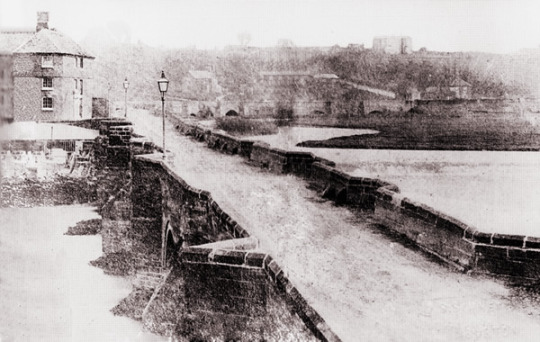
These fragments are all culled from a larger piece of work about beer, family, place and memory that is still fermenting somewhere in my head. I was inspired to finally put out a flight of snippets in response to Boak & Bailey’s #BeeryLongReads2020 challenge
* * *
Say, for what were hop-yards meant, Or why was Burton built on Trent? Oh many a peer of England brews Livelier liquor than the Muse, And malt does more than Milton can To justify God’s ways to man.
A.E. Housman, A Shropshire Lad
* * *
The first sip of a pint of ale made in Burton upon Trent can be off-putting to a newcomer. There’s something intangibly difficult about it, a shrugging note of unpleasantness that many find unsettling - a mineral toned, brackish kind of scent, that most immediately brings to mind sulphur; that distinct, diffuse, almost rotten egg character that you find in the water of towns that marketed themselves as spas, and once sold their healing properties to gullible Victorians with chronic nerve conditions.
Connoisseurs have a name for it, likening it to the fleeting sensory overload of an old-fashioned match being struck in a dark, draughty room.
They call it “The Burton Snatch”.
* * *
My father’s family have always lived in Burton and its surrounding villages, nestled among the hills and valleys between Staffordshire and Derbyshire. My great-grandfather was a farmer and a money-lender, who kept a cast iron safe in the living room with a lace doily and a bowl of fruit on top. He would open it up on Sunday evenings to take stock, counting out the large paper notes on his scrubbed wooden table while the rest of the family looked on.
My grandfather, Jimmy, was a promising football player who did a stint with Burton Albion, before going into business in the town, setting up Farrington’s Furnishers in two large units on the Horninglow Road. It was the kind of traditional, rambling shop that doesn’t exist much anymore - a haphazardly laid-out assembly of sofas, beds, dressers and wardrobes, tables, chairs, footstools and chests of drawers. At the back, there was a room full of rolls of carpet, piled high to the ceiling. My father and his brothers were playing there when the news came over the radio that JFK had been shot.
* * *

Brewing has happened in Burton for centuries, but the process really began millennia ago, when the substrata of the Trent valley settled with deep deposits of sand and gravel, a unique and serendipitous combination of minerals that built the foundations for everything that was to follow. An unusually high concentration of sulphates from the gypsum, coupled with healthy reserves of calcium and magnesium and low levels of sodium and bicarbonates, meant that when springs eventually burbled forth from the land around the river, the water had its own particular and unique character, a distinct presentation that the French might call “terroir”.
Beer-making started in earnest when an abbey named Byrtune was raised on the banks of the Trent, and the brothers did as all good monastic orders did, growing their own crops, raising their own livestock, and brewing their own beer. Over the centuries, the reputation for the region’s fine ale grew and spread, until the secret could no longer be kept.
When the canals came to Burton they made it into a city of industry and empire. Tentacle-like, capitalism stretched and unfurled its penetrating waterways across, through and over Albion’s gentle hills, bypassing the wild weirs of the Trent’s natural descent, domesticating the landscape and bringing uniformity, neatness, and standardisation to what was a tangle of disparate places and processes. By the middle of the 18th century, the Trent Navigation had been connected to the Humber, to the mighty Mersey, and down through Birmingham to the Grand Union, and suddenly, Burton was now a central hub functioning as part of a single network that ran throughout the country and onward, through its bustling ports, to Europe, Russia, and all points beyond.
* * *
Once their children grew up, my grandparents also left for the continent. Nearly every summer holiday of my childhood was spent visiting them in Portugal. Their home, known only as “The Villa”, was an idyllic place, where my brothers and I learnt to swim, where the smell of barbecue smoke lingered over every evening, where the coarse Mediterranean grass hurt our feet when we tried to play football on it. When I was young, I only really knew my grandparents in this sunlit, bright blue light - tanned, shortsleeved, wearing hats. Their accents may have been rounded and roughened in the heart of England, but their very essence to me was more exotic, more glamorous, more European.
Some of my first memories of drinking come from those summer holidays. Sips of pungent sea-dark wine, acidic and overwhelming; a sample of gin and tonic, bitter and medicinal with a gasping clarity; and of course, beer - not ale, nothing my grandfather would touch - but lager, cold and crisp and gassy, a fleeting glimpse of adulthood.
* * *
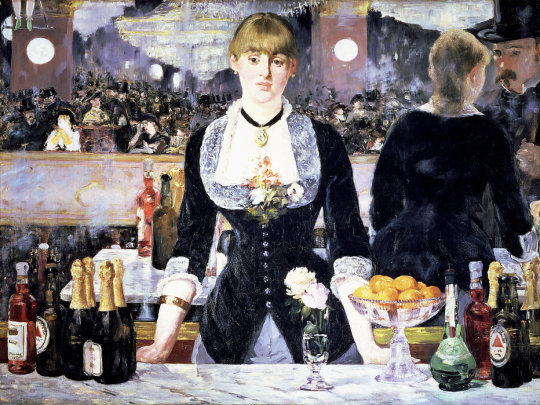
Beer, like everything else in a free market of money and ideas, has been subject to fashion and changing tastes, and it was a fashion for pale ales that truly put Burton on the map. With the proliferation of the waterways, hops from Kent and barley from East Anglia could make their way to Burton where, combined with the local water, they were turned into a revelatory, and wildly popular beverage.
Breweries proliferated throughout the town. At its peak, more than 30 rival businesses competed for space, ingredients, and workers to keep the kettles boiling and grain mashing. Burton became the brewing capital of the world, home to emblematic firms like Bass, which by 1877 was the world’s largest brewery. Its famed pale ale was so acclaimed and copied that the distinctive red triangle that adorned its labels became the UK’s first registered trademark, a mark of its singular quality.
* * *
Even when my grandparents lived abroad, Burton still pulled my family to it. Christmas called us back year after year, or Boxing Day at least, catching up with uncles and aunts and first and second cousins, some removed, to sit in sitting rooms in front of three-bar fires, eating ham cobs, drinking flat Schweppes lemonade, watching World’s Strongest Man on the television. The arresting vision of a large man pulling a tractor down a runway or throwing a washing machine over a wall would be accompanied by the sound of adult chatter, long-delayed catch-ups on weddings, births, and especially deaths - distant relatives and long-lost school mates, old girlfriends with cancer scares, run-ins with the police.
One uncle, who worked in a brewery like a true Burtonian, kept terrapins. I would gingerly feed them sunflower seeds, holding my hand above the dark waterline of the cramped tank, waiting for the vicious snap to emerge from the depths. ���Pedigree doesn’t travel well,” he once told me, referring to a renowned local bitter. Some things cannot leave Burton behind.
* * *
Burton’s skyline doesn’t have church towers, it has fermentation vessels. Over the decades, as companies have merged, collapsed, consolidated or been taken over with some hostility, the name on the side of the largest set has changed, so that what drivers on the bypass see reflects whatever corporate overlord assumes feudal control in that particular age.
In the middle years of the twentieth century, brewing, like many industries, saw the white hot intensity of competition eliminate all but the largest of breweries. Experts will tell you that the beer suffered along with it, accompanied by punitive taxation from the government and a nannying attitude to pubs and drinking, the hangover of Victorian prudishness being enacted by the grandchildren of those who first envisaged it. Tastes changed under the weight of global pressures, and ultimately, Burton lurched along with them, becoming, through a complex web of corporate exchanges, the brewing site of Canadian brand Carling Black Label.
In the ensuing decades, Carling would become the UK’s best-selling beer, a “domestic” rival to the traditional European lager brands that dominated in Germany, France and Denmark. The attritional battles left their marks on Burton though, as closures and collisions shuttered various facilities and churned through generations of workers, leaving tracts of vacant space even in the centre of town. Coming off the train now, you overlook the whole of Burton, and get the sensation of standing in the middle of a vast and scattered industrial facility, where smokestacks and grain towers overpeer gritted-teeth terraced houses, pockmarked shopping streets and vacant lots.
The make-up of the town shifted too. In the middle of the Midlands (Burton is linguistically and administratively part of the East Midlands, but geographically in the West Midlands) the town received its fair share of immigration. A town my grandparents knew as almost entirely white and Christian is now almost 10% Pakistani Muslim - a thriving community of teetotallers, in a town famous for its beer.
* * *

My grandparents celebrated their diamond wedding anniversary in 2014, flying back from Portugal to hold a party at the National Brewery Centre in the middle of Burton. It was a lovely evening, with a large cake and lots of happy stories, relatives and friends I’d never seen before and would never see again. After an early finish, my cousins and I went to a pub, drinking pints of milk-smooth ale, before ending up in a small, loud, nightclub playing cheesy pop hits. The next morning, hungover, I walked with my parents to Stapenhill Cemetery to stare at the headstones of ancestors I had never met.
* * *
There is a popular documentary series on the BBC which sees celebrity costermonger Gregg Wallace visit various sterile facilities around the UK to witness firsthand how automation and mechanisation has changed food production. Each episode has him walking through eerily empty factories, vast and cavernous spaces where robotic production lines operate 24 hours a day, speaking to the remaining human operators who exist now as mere caretakers, there to tend and nurse the machines like temple virgins, dressed in hairnets instead of togas. It is an uncanny sight. Every installment inevitably begins with drone shots, hovering silently above the landscape, showing the immense scale of these conurbations, raised in places where land is invariably cheap and generations of people have been bred into cycles of tireless shift work. But the workers are not needed any more. Efficiency has eradicated the need for fleshy points of failure.
Now, Gregg can skip through the barren hallways, silent save for the harmonic hum of perpetual machinery, flashing his blinding white overalls and quoting mind-boggling statistics about the weight of crisps the average British child eats in a year. Various natural products are ushered in off the backs of lorries and railway carriages, fed along whirring conveyor belts and pumped through pneumatic tubes, before being baked, frozen, cut, dried, soaked, dessicated, rehydrated and reformulated into whatever bland final product can now be ejected out into the world, via shipping containers and along motorways, all to sit on a supermarket shelf before making an appearance in your cupboard, a moment on your table, and a lifetime rotting away in some far-off landfill.
It was inevitable that Burton’s MolsonCoors brewery, the home of Carling, would get its chance in the spotlight. The programme highlighted the noble history of brewing, from its pre-modern farmhouse days, when fermentation was practically a shamanic ritual, to its domestication and commodification, where each step in the process was refined and perfected, to where we are now, when every aspect has been exactingly costed and painstakingly budgeted to ensure maximum productivity, and maximum profit, with minimal ingredients, energy, or intervention. There has been a backlash to this macro-attitude, of course - “craft beer”, an ill-defined, equally co-optable movement that alludes to provenance, quality, care, and a confused sense of heritage, has become a big business in its own right, backed by venture capital and crowdfunding campaigns - but industrial brewing is still the fixture in the firmament, the thing that keeps the lights on.
When one of the few remaining humans showed Gregg the tiny, almost homeopathic quantity of hops that would add a semblance of bitterness and aromatic flavour to a lake-sized vat of Carling, it felt almost like a knowing wink - look at what we can get away with - one made safe in the knowledge that their beer will still pour in nearly every pub and take up the most shelf space in corner shops and petrol stations across the country. Of course they’ll get away with it. They’ve always got away with it. They will sell us beer with barely a sense memory of taste in it, and we will literally lap it up.
* * *

My grandfather died in hospital, in Portugal, after an indeterminate period of undramatic but gradually worsening health. His four children took turns flying out to spend time with him and their mother in the hospital, sitting by his bed, holding his hand, finishing the crosswords he was no longer able to complete.
He was cremated there, but a memorial service to remember his life was held in Burton on a crisp, February day a few weeks later. Alighting at the railway station, I watched steam from the breweries crowd the startlingly cold air, while waiting for my parents to arrive and drive us the ten minutes to Rolleston Cricket Club where the small gathering would take place. On the way, we drove up Horninglow Road, past what was once Farrington’s Furnishers, now Zielona Żabkal, a Polish supermarket. We got there early and spent some time setting up, arranging the folding tables and stackable chairs, hanging up photos, and laying out some mementos of my grandfather’s happy life - a table tennis bat, some puzzle books, a golf club, his familiar white hat.
I was tasked with approving the beer for the day. There were two casks of Bass on the bar - one which had been there a few days, the other tapped that morning. “I’m a lager man,” the bartender told me, so I tried both to see which was in form. The first had the faintest tang of vinegar that suggested oxidation, a beer that was at the end of its life, drowning in the air around it. The second was lively, enthusiastic, a little overly keen and overripe, but would settle down through the afternoon as the long goose-necked pump poured pint after pint for the guests who shuffled in, in suits and raincoats, shiny shoes and walking sticks, to pay their respects. Everyone told stories. I read a letter on behalf of my cousin, working on the other side of the world. We drank many, many pints of Bass in good nick, then when we were finished, we went to a pub, and drank many more.
When I had to catch my train back to London, I staggered back through the freezing night, to find that the town was mashing in - somewhere in the vast floodlit breweries, a switch had been thrown and malted barley was being soaked in that famous hot water, and the streets were being filled with the scent of porridge and healthy, earthy grains; a warming, nostalgic tide that overflowed down the road and spilled through the centuries; riding, falling, on the biting cold air.
#beer#writing#beer writing#food writing#ale#hops#barley#burton on trent#burton#family#memoir#beerylongreads2020#craft beer#bass#cask ale#real ale
4 notes
·
View notes
Photo

Στο βιβλίο του με τίτλο «The End of History and the Last Man» (1992), ο Francis Fukuyama πρότεινε πως, με τη λήξη του ψυχρού πολέμου, τη διάλυση της Σοβιετικής Ένωσης και την ανάδειξη της δυτικής φιλελεύθερης δημοκρατίας, η ανθρωπότητα δεν εισερχόταν απλά σε μία νέα μεταπολεμική περίοδο, αλλά στο τέλος της ίδιας της Ιστορίας.
Ότι δηλαδή, με την ιδεολογική εξέλιξη της ανθρωπότητας να φτάνει σε ένα τελικό σημείο, η σταδιακά παγκοσμιοποιούμενη δυτική φιλελεύθερη δημοκρατία θα αποτελούσε την τελική μορφή διακυβέρνησης των ανθρώπων.
Είναι αλήθεια πως εκείνα τα χρόνια, τουλάχιστον στη δύση, δεν χρειαζόταν να έχεις διαβάσει το βιβλίο για να οσμιστείς πως το κοινωνικό κλίμα απέπνεε ακριβώς αυτή την οσμή. Παρ’ όλα αυτά, ένας σπουδαιότερος κατά τη γνώμη μου διανοούμενος, είχε διαφορετική γνώμη. O Αλεξάντερ Ζινόβιεφ, κορυφαίος Ρώσος κοινωνιολόγος, έδωσε το 1999 μία συνέντευξη στο περιοδικό French Figaro. (Ολόκληρη η συνέντευξη είναι διαθέσιμη εδώ. Μεταφέρω κάποια αποσπάσματα, σε δική μου μετάφραση από τα αγγλικά).
«Η δημοκρατία προαπαιτεί πλουραλισμό, και πλουραλισμός σημαίνει την ύπαρξη τουλάχιστον δύο, περίπου ίσων, δυνάμεων που αντιπαρατίθενται αλλά και, ταυτόχρονα, αλληλοεπηρεάζονται… Ο δημοκρατικός και ευημερών καπιταλισμός, με νόμους που πήγαζαν από την κοινωνία και με προσφορά εργασίας για όλους, οφείλει σε μεγάλο μέρος την ύπαρξή του στο φόβο του κομμουνισμού. Η πτώση του κομμουνισμού στην ανατολική Ευρώπη πυροδότησε στη Δύση μία μαζική επίθεση στα κοινωνικά δικαιώματα των πολιτών. Οι σοσιαλιστές, που σήμερα βρίσκονται στην εξουσία στις περισσότερες ευρωπαϊκές χώρες, ακολουθούν πολιτικές αποσάθρωσης της κοινωνικής ασφάλισης, καταστρέφουν κάθε σοσιαλιστικό στοιχείο που διέθεταν οι καπιταλιστικές κοινωνίες. Δεν υπάρχει πλέον στη Δύση πολιτική δύναμη που θα προστατεύσει τους απλούς πολίτες. Τα πολιτικά κόμματα υπάρχουν για καθαρά τυπικούς λόγους. Και καθώς περνά ο χρόνος, θα διαφέρουν όλο και λιγότερο… Ο ολοκληρωτισμός εξαπλώνεται παντού καθώς μία υπερεθνική δομή επιβάλλει τους νόμους της στα επιμέρους κράτη. Αυτή η μη δημοκρατική δομή διατάσσει, επιβάλλει κυρώσεις, οργανώνει εμπάργκο, ρίχνει βόμβες, προκαλεί πείνα… Συγκριτικά με την οικονομική δικτατορία, η πολιτική δικτατορία έχει ανθρώπινο πρόσωπο… Στο ορατό μέλλον, η διαδικασία της εξάλειψης του διαφορετικού από τον κόσμο δεν μπορεί να σταματήσει, διότι ο δημοκρατικός ολοκληρωτισμός είναι η τελευταία φάση ανάπτυξης της Δυτικής κοινωνίας, η οποία ξεκίνησε με την Αναγέννηση.»
Το να εξηγεί κανείς τους λόγους για τους οποίους η έμμεση δημοκρατία οδηγεί στην κακιστοκρατία και τελικά στην ολιγαρχία, ��ίναι πλέον παρωχημένο. Το δράμα εξελίχθηκε και ολοκληρώθηκε μπροστά στα μάτια μας και, αν κάποιος δεν μπόρεσε να αντιληφθεί τη διεργασία, οφείλει να βλέπει το τελικό αποτέλεσμα. Διαφορετικά, είναι παντελώς τυφλός. Τι συνετέλεσε όμως σε αυτή την τόσο γρήγορη εξέλιξη;
Κατά τη γνώμη μου, λίγοι είχαν υπολογίσει την Κίνα. Η χώρα αυτή αποτέλεσε την ισχυρότερη οικονομία του πλανήτη κατά τους ιστορικούς χρόνους, με εξαίρεση τους τελευταίους αιώνες.
Μάλιστα, βλέποντας την άνοδο της Κίνας, κάποιοι έσπευσαν να μιλήσουν για αποκατάσταση αυτής της «τάξης» πραγμάτων.
Άλλοι πάλι, οι πιο πιστοί στη δύναμη του φιλελεύθερου καπιταλισμού, θεώρησαν ότι, υιοθετώντας τον καπιταλισμό, η Κίνα δεν θα αργούσε να γίνει και φιλελεύθερη, οπότε θα ενσωματωνόταν στο γίγνεσθαι που περιγράφει ο Fukuyama.
Τελικά, με κυριαρχία είτε των Η.Π.Α., είτε της Κίνας, είτε έστω κάποιας άλλης δύναμης -ορισμένοι προέκριναν την Ευρωπαϊκή Ένωση, λόγω της υπερεθνικότητας που τη χαρακτήριζε-, η φιλελεύθερη δημοκρατία θα κυριαρχούσε.
Όμως, η διεργασία μετάβασης της Δύσης προς το δημοκρατικό ολοκληρωτισμό εξελισσόταν παράλληλα με την οικονομική άνοδο της Κίνας.
Ενώ λοιπόν τα βλέμματα ήταν στραμένα με προσμονή προς τη φιλελευθεροποίηση της Κίνας, λίγοι μπόρεσαν να αντιληφθούν το αυτονόητο:
Η Κίνα δεν θα χρειαζόταν ποτέ να «εκδημοκρατιστεί». Η Κίνα ήταν ήδη ένα ολοκληρωτικό καθεστώς και, εισερχόμενη στις αγορές, αποτελούσε πλέον ένα μοντέλο ολοκληρωτικού καπιταλισμού.
Οι δυτικοί ήταν δύσκολο να το αντιληφθούν, καθώς μετά από λίγους αιώνες κυριαρχίας, είχαν καταστεί αλαζόνες.
Όμως, η αλήθεια ήταν πως η Ιστορία δεν μπορεί να περιμένει, και η Κίνα ερχόταν από το μέλλον.
Από τη στιγμή που η Δύση κατάφερε να επιβάλλει σε όλους πως η επιτυχία προσμετράται αποκλειστικά και μόνο μέσω του χρήματος, δεν χρειάστηκαν και πολλά χρόνια για να αποδειχθεί πως, υπό αυτό το πρίσμα, ο ολοκληρωτικός καπιταλισμός είναι πιο αποτελεσματικός από τον δημοκρατικό.
Στο κάτω κάτω της γραφής, αν είναι να βγουν χρήματα από την πώληση ενός καρκινογόνου εντομοκτόνου, οι διαμαρτυρίες της κοινής γνώμης δεν αποτελούν παρά βαρίδι.
Και είναι έτσι γιατί, αν οι πολίτες που διαμορφώνουν αυτή την κοινή γνώμη είχαν μετοχές στην εταιρεία που κατασκευάζει το εντομοκτόνο, τότε η πλειοψηφία τους θα διαμόρφωνε μια κοινή γνώμη διαφορετική.
Και κάπως έτσι, εκλογές, δημοψηφίσματα, δημόσιος διάλογος κλπ, όσο ευχάριστα και αν ακούγονται στα αυτιά μας, καθίστανται κατακάθια της Ιστορίας.
Με την ταχεία στροφή της προς την ολιγαρχία, η Δύση εκφράζει την αγωνία της να παραμείνει στο τρένο των εξελίξεων.
Και αν παρατηρήσει κάποιος τις ε��ελίξεις επισκοπικά, δεν μπορεί παρά να δει την ολιγαρχία να παγκοσμιοποιείται.
Η άφιξη του «Τέλους της Ιστορίας» που αντιλήφθηκε ο Fukuyama μοιάζει γεγονός, αν και έχει ακόμη πιο τερατώδη όψη.
Είναι αλήθεια πως η αναδυόμενη κατάσταση φαντάζει δυστοπική. Όμως, όπως πολύ σωστά (κατά τη γνώμη μου) αναφέρει ο Yuval Harari, η Ιστορία δεν προχωρά με γνώμονα την ανθρώπινη ευτυχία. Αν ήταν έτσι, οι τροφοσυλλέκτες τα περνούσαν μια χαρά και μάλλον δεν θα ενσωματωνόταν ποτέ στη γεωργική επανάσταση. Η Ιστορία μοιάζει να προχωρά με δική της βούληση, και το μόνο που ζητά είναι να της προσφερθεί το κατάλληλο όχημα που θα τη μεταφέρει προς την κατεύθυνση που εκείνη επιθυμεί (Mark Mazower, The dark Continent. Europe’s twentieth Century. (1998)) Και, για την ταχεία μετάβαση της δύσης από τη δημοκρατία προς την ολιγαρχία, είναι πλέον γνωστό πως τα γεγονότα-σοκ αποτελούν ιδανικά οχήματα.
Μέσα σε αυτό το πλαίσιο προσεγγίζω και τις εξελίξεις της τρέχουσας πανδημίας.
Άποψή μου είναι πως δεν έχει καμμία σημασία από πού ξεκίνησε, αν η εμφάνισή του νέου ιού είναι τυχαία ή αποτελεί ανθρώπινο λάθος· ή ακόμη και σχέδιο, όπως υποστηρίζουν πρόθυμα όσοι αρέσκονται σε συνωμοσίες.
Αυτό που έχει σημασία είναι ότι το όχημα είναι πρόσφορο, και οι πλέον πρόθυμοι έχουν ήδη ανεβάσει την Ιστορία πάνω σε αυτό.
Το αν τα μέτρα περιορισμού του πληθυσμού διατηρηθούν και σε ποιο βαθμό, έχει σημασία μόνο αν αναρωτιέται κανείς για το πόσο κοντά στον ολοκληρωτισμό θα μεταφέρει την Ιστορία το όχημα τούτο. Μέχρι να βρεθεί -ή να κατασκευαστεί- το επόμενο.
Πάντως, όσο η πανδημία σοβεί, είναι εύκολο να προβλέψει κανείς το ακόλουθο: ανεξάρτητα από τον αριθμό κρουσμάτων και νεκρών, η Κίνα θα υποβαθμίζει το πρόβλημά της και θα παίρνει όσο το δυνατόν λιγότερα μέτρα.
Ταυτόχρονα, στη δύση θα κυριαρχεί η τρομολαγνεία των Μ.Μ.Ε. ενώ τα μέτρα περιορισμού των πολιτών θα προβάλλονται ως η αναγκαία αλλά και ιδιαίτερα αποτελεσματική συγκολλητική ουσία που μας ενώνει.
Είναι λάθος λοιπόν να διαμαρτύρεται κανείς όταν διαφημιστικές εταιρείες αμείβονται με υπέρογκα ποσά για αυτή την καμπάνια, ενώ τα Μ.Μ.Ε. παίρνουν ποσοστά από τα αυτά κέρδη, ώστε να προβάλλουν τα σχετικά σποτάκια. Θα είχε δίκιο αν όλοι αυτοί επιτελούσαν κοινωφελές έργο, όμως δεν κάνουν αυτό.
Είναι βέβαιο ότι όλα αυτά ακούγονται εξαιρετικά ζοφερά. Όμως, η αισιοδοξία και �� απαισιοδοξία δεν αποτελούν παρά συναισθηματικούς χρωματισμούς που δίνουμε στην αλήθεια.
Η αλήθεια δεν έχει χρώμα. Η αλήθεια αποτελεί την πλατιά βάση μιας πυραμίδας, ενώ τα όνειρά μας πατούν πάνω σε αυτή τη βάση, υψώνονται και φτάνουν ως την κορυφή.
Καλό είναι να μην αναστρέφουμε αυτή την πυραμίδα.
Αν το κάνουμε, το βάρος της πραγματικότητας γρήγορα θα συνθλίψει την ομορφιά, για όσους ακόμη μπορούν και τη βλέπουν.
Daily inspiration. Discover more photos at http://justforbooks.tumblr.com
4 notes
·
View notes
Text
With All My Body
Bucky Barnes x Reader
Summary: A story about how Bucky falls over and over again for you, from the very first time he meets you, with all his senses.
Words: 4k
Warning: smut (well, it is not actual smut, just a slight few paragraphs about it.)
A/N: For you to know, when I wrote about the orchestra I didn´t have in mind the typical orchestras we all know, but the one that works with Hans Zimmer. (If you don´t know who he is, I really recommend you go and check his videos. He makes music for well-known movies and the songs are wonderful.) So, yeah, I have that image of an orchestra in mind.

(Credits to the owner of the gif.)
The night is covering the city and the powerful lights of buildings and of propaganda signs dominate the sight.
As everybody knows, the city of New York does not sleep and today is not the exception. If one stands in the middle of a street, any crowded street, he is going to hear music coming from bars, horns and brakes of cars and busses, the voices of the thousands of people passing by his side. The continuous vivid noise of the city is an essential factor for considering New York "not for everyone."
However, in one of the theaters of the American state, the environment is peaceful, calm. Only whispers among the audience can be heard.
With his ear as trained as the rest of his body and with the help of the serum, Bucky can hear most of the whispers without having to do any effort at all.
His seat is on the second file of the theater, right in front of the fancy stage which has heavy red curtains hunging from the ceiling down to the floor with a huge screen on the back. The file is also occupied by some others well-known citizens: Steve Rogers, Sam Wilson, Natasha Romanoff and the man who was born for being on the spotlight, Tony Stark.
One of the most respectable orchestras of New York is now playing a series of concerts in the city after returning from a two-month tour in Europe around the most refined theaters of the old continent.
Being Tony Stark "friend" of half of the city, of course he knows the director of the orchestra. Therefore, after receiving a call from the director himself inviting him and the rest of the Avengers to the concert, Tony could not say no and Steve, Bucky, Sam and Natasha could not avoid not coming.
The warm lights of the theater are now gone and the only area which continues illuminated is the stage where two huge grades for the musicians are standing and a shiny dark brown piano in the middle of both grades can be seen.
A wave of applauses arises as the musicians appear one behind the other as they position themselves on the grades. The applauses do not cease when the last musician is on his place since the director appears and raises his hands to wave the auditorium. Then, he sits in front of the piano as he looks at the rest of the musicians, making sure they are ready to begin.
The stage lights only illuminate the director. He puts his hands above the keys of the piano, like caressing them with an extreme delicacy before starting playing with them the first chords of the song. The beautiful and delicate sound that comes from the piano is enough to move the audience.
After a few seconds, the bass accompanies the piano and immediately after, the cello starts playing, becoming, together with the piano, the main instruments of the song.
That is the reason why the light above you starts illuminating only you, one of the cellists of the orchestra. You are standing, together with two other violinists, on the left side of the stage.
In the meantime, Bucky has been paying attention to the piano. It brings him back memories of his time in the first decades of the twentieth century. He could not avoid thinking about the occasions in which he used to go to bars and on the small stages, there always was a man playing his piano.
Bucky realizes that the melancholy that has arised in him is even stronger when he hears the cello. Still, he cannot move his eyes from the piano and so, from the memories of his older self, of the James Barnes who did not know what true pain was.
The sound is beautiful, he thinks. How is it possible that the sound of strings can cause him to find feelings and evoke memories that he had buried down in his mind?
Bucky closes his eyes and lets his ears be the channel for the melody to fill his body that has already provoke so much on him. Those piano keys that are being played and the cello, oh, that powerful cello that makes him wanna cry. How can an instrument produce so much things in Bucky? How is it possible he starts playing in his mind moments of his life just by the waves of sound travelling on the air? Bucky stops asking himself all those questions and only enjoys the sounds that have drown him.
For a moment, he lets himself get lost in the music he is hearing and go to wherever his mind wants to take him.
When he opens his eyes, the other light of the stage, the one above you, is the one that calls Bucky´s attention. His eyes leave the piano and now, they are on you.
And they remain on you the rest of the night.
He hasn´t heard you talk yet, but the way you play the cello is enough for him to fall in love with the sounds you emit. He can hear you speaking through your cello and for Bucky, it is enough.
Bucky is not sure if it is the light and the shadows that seem to play in your face that make you misterious, or if it is because of the way your body moves as you play the instrument... He does not know why but he cannot take his eyes off you because he finds you fascinating, seductive, outstanding, enigmatic.
He looks at your hair and how it falls from one side to the other as you slowly move your head at the sounds you are creating and that are filling the theater. Just the movement of your body makes it possible to perceive that these sounds travel from your ears to your veins. He looks at your hand holding the bow and moving it from left to right. He looks at your left hand, the one on the neck of the cello and he sees how you make that technical move as if it were shaking so as to make the strings vibrate and create that special effect on the strings.
Bucky stares at you as a painter stares at the canvas in which he just finished painting the piece of art that, in his opinion, is the best he has ever done. He stares at you as a astronomer stares through the microscope the universe and its infinites galaxies. Bucky stares at you with admiration, intrigue, fascination.
His eyes look for you even when the lights are gone from the stage. He tries to make his eyes get used to the temporary darkness so as to distinguish your form behind your cello.
Bucky does not even know your name yet but you have already enchanted his ears and his eyes.
The next time Bucky sees you is at Tony Stark´s wedding, nine months after he saw you for the very first time at the theater.
The extasis and excitement he felt when he saw you for the first time lasted days and weeks. The idea of you as a mistery is what kept that extasis not to vanish for quite a long time.
He was sure that maybe he could google you just by writing “orchestra of New York” in the searching bar. Just maybe, your picture would appear together with your name. However, not only did Bicky find it creepy, but also, he still has some old manners. Being a man from the 40´s, he still considers that the best way to get to know someone is when you are face to face, not when you google their names and get information about them while the other person knows nothing about you.
So, for him, you are just that, an enigma. And just like any other enigma, he wants to know more about you, to discover something, anything about you.
It is a shock when he sees you standing there, making delicate movements with your hands while playing the songs you were asked by the bride, Pepper Potts.
------
Bucky leans on one of the two doors that faces the green surroundings of the party room. From where he is, he can appreciate what seems a never-ending field of grass, a huge tree on his left and a wide path made of stone —not comfortable at all for those wearing heals.
He sighs and closes his eyes for a moment, feeling the air that blows directly on his face. He can hear the rattle of heels from behind him and then, right next to him. He opens his eyes and he sees you walking by his side.
His breath stops for a second when he realizes it is you and, with guts that seem to come from the old Bucky Barnes — the flirtatious and outspoken Bucky of the last century, he says all of a sudden and without thinking his words: “Good show.”
““Good show”? Really, that´s the very first thing I have to say?” he thinks, wanting to punch himself.
You turn your head to look behind you as you hear a voice but you are not sure if the person is actually talking to you. When you see that the man is in fact looking at you, you reply: “Why, thanks!”
Bucky can finally hear your voice, but he will think about the pitch and the tone of your voice later on, when he is back in the tower, because right now, his mind is focused on actually talking to you.
“I saw you,” Bucky clears his throat and continues, “I saw you some time ago playing in here at David Geffen Hall. You were really good. You all were really good,” he rapidly corrects himself.
“Thanks again.” You are now facing him.
“I really like that you have incorporated electric guitars and basses to your orchestra. I´ve never seen that before.”
“Yeah, it´s innovating. They make our sound pretty unique and —“
“Y/N!” A voice from inside the party room interrupts you.
“Tony, what happened?” you ask as you see him approaching. The truth is, if it were for you, you would call him “Mr. Stark” but the times he went to your rehearsals with Pepper, he made clear he wanted you all to call him Tony. “Mr. Stark sounds as if I were your boss, or if I had seventy years old, so forget about it,” he told you.
“They have already warned me about you. Come on, join the party.”
“I can´t. I really can´t. It´s not professional to stay in here.”
“Come on, you are a guest to the wedding too. Staying the night, eating and drinking after your performance is not going to make you any less professional. There are other people of the orchestra in there,” Tony says as he points out to the inside of the room.
“I —”
“It´s not weird for any of us to see the musicians who just played walking and eating around the room. Is it?” Tony asks Bucky, who has been listening to your conversation but with his eyes stuck exclusively on you.
“No, it´s not,” Bucky rapidly answers back.
You look at Tony and sigh. You know that even though it goes against your rules, and the rules you´ve been taught when you were a teenager when rehearsing, that you cannot win a conversation to Tony Stark. So you just say: “Ok, I stay.”
“Great to hear that, Y/N!” Tony claps his hands twice. “I see that you already met Barnes. I´ll leave you with him while I go back to entertain my guests.” And just like he appears, Tony leaves both of you in an instant.
“I guess I´m going back inside, then. Are you staying here or are you going there to dance?” You ask Bucky as you start walking towards the crowd.
“To tell you the truth, I´m not much of a dancer.”
“Don´t worry, me neither. That´s why I dedicate my life to play an instrument and not to actually dance. I can stay here with you, if that´s fine for you.”
“Sure, I don´t mind your company.” Of course he doesn´t.
You end up sitting in the stair of the door where you´ve been talking, almost invisible for the rest of the guests who are dancing and singing out loud the pop songs the DJ plays.
Bucky finds out that you are actually a person easy to talk to. Of course you do not talk much about your personal lives, being still strangers with each other. But it is not a boring conversation and the few inevitable silences that arise are not uncomfortable at all; you always find a way to fill them and surprisingly, so does Bucky.
Having you so near him, Bucky realizes that you are as beautiful as when he saw you on stage. Of course the lights many times tend to create certain ��illusions” on people, but for him, you look as he saw you for the very first time.
This time, however, what awakes one of his senses, his nose to be precised, is your perfume. He can smell it every time you move your hair to your right as you talk, and every time you make that movement, your aroma goes directly to his nose.
Just as he did when he listened to the piano and cello being played, he closes his eyes to let your aroma fill him and appreciate it as much as he can. Because, it seems, when you have your eyes closed, your other senses become more intense.
The next time Bucky gets to know you through his senses is when his lips are on yours.
You have agreed on meeting at a café, not too far away from David Geffen Hall, where you are rehearsing, and nearby the Tower too.
After Tony´s wedding, you two have kept in touch —and for Bucky´s surprise, it was Tony who helped him and made easier for Bucky to keep in contact with you.
When you arrive and open the front door of the café, you can see that Bucky is already at a table, checking his phone.
“Hey, Bucky,” you tell him as he raises his head and a smile appears on his face. You take off your coat and your scarf and hang them behind your chair before taking a sit. “I´m sorry, coming here took me longer than expected.”
“Don´t worry, I´m glad you actually come,” he answers as his eyes spark of actual happinness for your presence.
You don´t say anything outloud, but you take notice of what he just said. “I´m glad you actually come”? Poor Bucky, you think, because you are sure that behind that phrase are hidden the times in which he was stood up.
And you are right.
“Where´s your instrument?”
“Oh, you were expecting me to break the peaceful atmosphere of this café by carring the cello, weren´t you?” You joke as you tuck your hair behind your ear. “We can keep them in there, those of us who have these huge instruments.” You try to change the subject and actually focus on him. “How have you been? How was your day?”
They are just simple, common questions but Bucky doesn´t remember being asked any of them. He appreciates your interest towards him, considering he has always thought of himself as someone who is not worth anybody´s time or interest.
Two hours. Two hours at the table of a small café surrounded by people walking by your side, entering and leaving the place... but none of you seem to notice any of them. To qualified the date as pleasant and comfortable is not enough.
“Do you have anything to do now?” you ask Bucky as you leave the café and put the red scarf around your neck.
“Not at all —“
“Do you want to, I don´t know, just walk? You interrupt him. “I´m having a great time with you.”
The feeling on his chest when he hears you say those final words can only be compared to the feeling of his lips on yours.
You end up standing in one of the thousand of corners of Central Park.
“Thank you for today and thank you for waiting for me at the café. I know you were there much more earlier than I.”
“How do you —?”
“The cup of coffee that was on the table when I arrived was empty and when I took it to accomodate what we order, it was cold.”
Bucky chuckles. “Thank you for coming.”
“I wouldn´t have missed it. I know we just met by I wouldn´t have missed the chance of seeing you again.”
Words have the power to heal, hurt, please, comfort, scare, destroy, create... Right now, your words are healing, comforting, hugging Bucky. He wasn´t expecting in a million years to hear those words directed to him. He wasn´t expecting words with a positive connotation to be said to him.
Without thinking it twice and leaving now behind all the nervousness and fear he had, he tucks your hair behind your ear and his hand remains on your ckeek. Bucky looks at you and your eyes confirm him that you can feel everything but horror and disgust of being here with him, especially with someone like him.
Bucky leans forward and you end up closing the gap between both of you. Your lips collide and what he is feeling inside when he touches your lips with his is indescribable.
The tender of your lips, the delicacy with which you kiss him as if he were so delicate you may break him... Just one kiss and you make him feel alive for the second time in his long, long life.
They tend to say that when you kiss someone, you feel like melting. On the contrary, the mere sensation of your lips crashing with his makes Bucky feel elevated, as if he were in another dimension.
As he is still kissing you, Bucky thinks that he wants to kiss you again and again; he wants to feel your lips every single time it is possible. Your mouth has suddenly become the source for Bucky to keep feeling alive, wanted, loved, real.
Bucky cannot believe it all started over a year ago, when he assisted to the recital your orchestra was playing. The truth is, he went because he wanted to appreciate how the orchestras of nowadays sound like.
During the 40´s, he remembers he got lost in the records he listened to. He wanted to connect to his past, to his old self, in some way, by listening again the music he used to listen to.
What he didn´t expect was to find you. However, at the beginning, it all turned out to be a platonic love, exactly as the crushes people have almost everyday of their lives at the subway, the bus, on the street with people they know most probably won´t cross paths with again.
However, he didn´t expect to find you at Tony´s wedding. Bucky did not know until the moment he saw you standing there, at the stage of the huge room, that you were playing for the wedding.
Bucky was not aware that he was going to find love and to rediscover this part of himself he one considered death, gone. It is not that he wasn´t his intention to find someone and fall in love with her, but he didn´t expect his mind and the chemicals within his mind could segregate the love he feels with so much intensity. He was sure that, after a life of suffering and living under a totally hopeless darkness, the only sensation he could feel with all his body was hatred and resentment.
But life has showed him that, as long as he is and feels alive, he would still find himself with emotions that make his heart pump of excitment and profound happiness.
And right now, Bucky feels more alive that ever. Right now, Bucky is feeling you with all his senses.
His hands on your body, more precisely on the curves of your naked body. His nerve endings of his right hand and the special, artificial nerves created specifically for his left are make it possible for him to feel your skin and he trace it as it he were appreciating velvet.
The delicacy of his touch can be compared to the delicacy with which you play the strings of your cello, careful enough not to break any of them.
Not only his hands, but the feeling of your legs around his waist while he thrusts into you takes him into a state of ectasy that is hard to compare to any other sensation.
Bucky kisses your parted lips and you open them even more to welcome his. You then find his tongue in your mouth and you crash it with yours instantly. The exquisite and exciting sensation of your tongue caressing his is beyond words.
The feeling of your pulse when he kisses your neck; the smell of your perfume, that characteristic delicate aroma in your neck and wrists that Bucky loves so much.
Hearing you moan, saying his name outloud like a prayer, and all those sounds that come from your throat are one of the best sounds he has ever heard. If you stole his heart the moment he listened to you playing the cello for the very first time, then hearing you produce all these more intimate sounds feel like a warm bullet that has just exploded into a million pieces in his chest.
Seeing you with your eyes close, your lips partly open trying to breath and get back all the air your lungs have missed because of the kisses and the moans, the veins of your throat when you involuntarily tilt your head back because of the pleasure your whole body is feeling.
However, what makes Bucky fall apart is hearing you say “I love you. I lo- love you so much, Buck,” as you try to control the pitch and the clearness of your voice as he thrusts into you.
“I love you too, doll.” “You make me feel alive,” is what he intends to say but his lungs does not have enough air to release any other sound and his vocal chords seem not to respond to his brain, they are static.
Not in a million years would Bucky have imagined that it is possible to fall over and over again for you, when all his senses are involved.
Bucky loves you when he hears you playing your cello, when he hears you singing any song stuck in your mind, when he hears you saying his name.
He loves you when he smells your perfume everytime he kisses your neck and when he leans his head in yours and he perceives the aroma of your shampoo.
Bucky loves you with every cell of his body when he sees you playing your cello at the stage, when he sees your body moving at the rhythm of music and you completely disarm him every time you look at him while you´re performing, or when you open your eyes after you come undone, or when you just turn your head and look at him over your shoulder with a smile on your face.
He loves you when he can feel you with his lips, when he kisses every inch of your body or when his tongue tastes the sweetness of your perfume on your throat every time he licks it.
And Bucky loves you because you are real and he can reaffirm it every time he touches you, when you hold hands, when he just feels the tender touch of your hands in his hair, your arms around his neck when he needs you the most.
Bucky loves you with all his body and he knows you love him with yours too because you have shown it to him since the very first time you kissed.
#bucky barnes x reader#bucky barnes fanfiction#bucky barnes fluff#bucky barnes x reader fluff#bucky barnes x you#bucky barnes x y/n#james barnes fanfiction#james barnes x reader#james barnes x you#bucky barnes fic#james barnes fic#Avengers writing#avengers fanfiction#avengers fanfic#marvel writing#marvel fanfiction
133 notes
·
View notes
Text
Harry Potter: 5 Best Wizarding Schools (& 5 Worst) | ScreenRant
While the Harry Potter books and movies are mostly set at Hogwarts in Great Britain, it isn’t the only Wizarding School. For instance, the first mention of other Wizarding Schools came with Harry Potter and the Goblet of Fire where Harry finds himself participating in the Triwizard Tournament alongside representatives from France’s Beauxbatons Academy and Eastern Europe’s Durmstrang Institute.
RELATED: HARRY POTTER: 10 THINGS YOU DIDN'T KNOW ABOUT WIZARDING SCHOOLS (THAT AREN'T HOGWARTS)
Then in the Fantastic Beasts films, America was revealed to have its own Wizarding School called Ilvermorny. Additionally, J. K. Rowling announced that there are 11 Wizarding Schools in the entire world. Of course, not all of them are the best.
10 Best - Mahoutokoro School of Magic
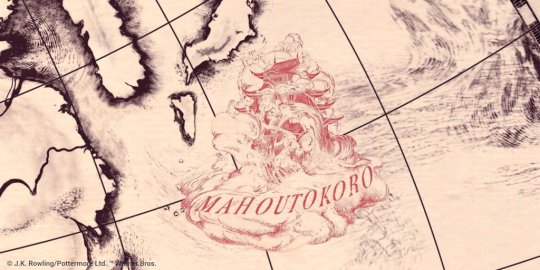
Despite having the “Smallest student body of the eleven great wizarding schools” in the Harry Potter world as Pottermore states, Japan’s Mahoutokoro School does make up for it by having some really amazing features that are up there with the best. For instance, students get to fly on the backs of giant birds (specifically Storm Petrels) to the school itself which resides on a volcanic island as well as receive enchanted robes that change size and color overtime.
Additionally, the school’s Quidditch players are said to be incredibly good which carries over into the national team known as the Toyohashi Tengu. The main reason for this is the intense training that involves flying over stormy seas.
9 Worst - Bothwell School of Witchcraft

Though this school is technically not part of the Harry Potter world, it does bear mentioning among the worst due to how much it derives from Harry Potter. Located at the real-life Herstmonceux Castle in East Sussex, England, Bothwell is an annual live-action roleplaying experience where one can go to a fictional magic school as a student and attend magic-related classes while solving mysteries on the side.
RELATED: HARRY POTTER: 10 FACTS YOU DIDN'T KNOW ABOUT THE DURMSTRANG INSTITUTE SCHOOL
Sound familiar? While it’s not officially related to Harry Potter nor uses actual names and lore from the franchise, the similarities pile on as one not only receives a letter once accepted by the school but also students get sorted into one of four Houses represented by different colors and animals. Students even receive robes and neckties with the latter relating to the colors of their designated House.
8 Best - Uagadou School of Magic

Pronounced ‘Wag-a-doo,’ this Wizarding School located in Uganda within the African continent is considered to be “The largest of all wizarding schools” in the Harry Potter world according to Pottermore making it arguably one of the best. Instead of getting a letter via owl, future Uagadou students receive inscribed stones from Dream Messengers (though what they look like is unknown) sent by the Headmaster/Headmistress which sounds incredibly convenient.
Then while Uagadou students do use wands, Pottermore claims most spells are cast using hand gestures or finger pointing which makes getting out of an International Statute of Secrecy violation easier (which is the law that keeps the presence of the Wizarding World hidden from Muggles). Among the subjects that are specialized in Uagadou include useful ones like Self-Transfiguration Alchemy and Astronomy.
7 Worst - Castelobruxo

Now this Wizarding School in the Harry Potter world isn’t bad for the things it offers, including exchange programs for European students as well as specialization in subjects like Magizoology and Herbology, but it’s arguably among the worst in terms of its environment. Appearing as an ancient ruin to Muggles, Castelobruxo (which is pronounced as ‘Cass - tell - o - broo - shoo’) resides within a Brazilian rainforest and is protected by mischievous creatures called Caipora that are said to resemble small dark-skinned humans with red hair though their description varies mythology-wise.
Aside from the recent fire that’s been affecting Brazil’s rainforests as of late, which would certainly pose an environmental hazard if this school existed to this day, rainforests are generally humid hot and full of poisonous creatures that are even parasitic in some cases. Now Pottermore says the students at Castelobruxo wear “Bright green robes” that wouldn’t feel great in contrast to the heat and humidity, plus one wouldn’t be able to go anywhere outside of the school without considering the natural dangers of the rainforest both big and small.
6 Best - Ilvermorny School of Witchcraft and Wizardry
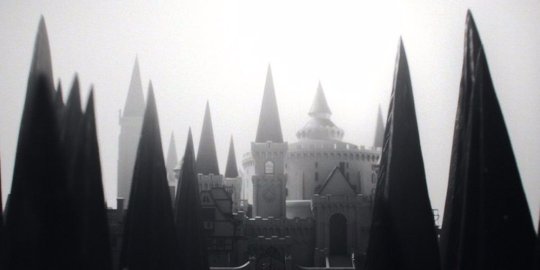
Much like Hogwarts, Ilvermorny is known for being more democratic than most Wizarding Schools within the Harry Potter world in terms of admitting students of Muggle-Born and Pure-Blooded heritage. Though the school’s early history was plagued with tragedy, it grew in popularity during the early Twentieth Century particularly in the 1920s when the first Fantastic Beasts movie takes place making it one of the best.
RELATED: HARRY POTTER: 10 THINGS THAT NEED TO HAPPEN BEFORE THE FANTASTIC BEASTS SERIES ENDS
While new students are sorted into different Houses, they are also given their first wands at the school as well. The reason for this is that until 1965 “No child was allowed a wand until they arrived at Ilvermorny” as stated by Pottermore. The school even teaches unique subjects, including Xylomancy (a type of Divination that uses twigs).
5 Worst - Wizarding Academy of Dramatic Arts

Given the wide variety of topics and career options that are present in most Wizarding Schools in the Harry Potter world, who would go to one that offers a singular topic and career path? Well, apparently some as there is a Wizarding Academy of Dramatic Arts available in Great Britain.
As the name implies, it’s a school where wizards and witches can study theatre or performance arts in general for a career in it. While magic and theatrics certainly can go in hand, given the history of stage magicians and illusionists, it seems like a limitation of one’s magical abilities. For this reason, it is arguably one of the worst schools to go to for general education.
4 Best - Beauxbatons Academy of Magic

Compared to the other Wizarding Schools discussed so far, this one gets top marks for being one of the prettiest schools in the Harry Potter world. Situated in the Pyrenees Mountains along the border between France and Spain, Beauxbatons (pronounced ‘Bo - batton’) is described by Pottermore as being “A chateau surrounded by formal gardens and lawns created out of the mountainous landscape by magic”.
RELATED: HARRY POTTER: 10 FACTS YOU DIDN'T KNOW ABOUT BEAUXBATONS ACADEMY OF MAGIC
It is even said to have a beautiful fountain with water that has magical properties in healing and beauty, named after the famous alchemist Nicholas Flamel and his wife Perenelle. With famous alumni like that, it’s certainly one of the best Wizarding Schools there is.
3 Worst - Koldovstoretz

Though not much is known about this school situated somewhere in Russia, Koldovstoretz does offer a more extreme version of Quidditch where the participants “Fly on entire, uprooted trees instead of broomsticks” according to Harry Potter Wiki. Despite sounding more cool, it doesn’t seem very comfortable from a practical perspective.
Another factor to consider is the environment, which would be far from pleasant given how cold it typically gets in Russia. So it doesn’t sound like an interesting school to go to, unless one enjoys living in extreme environments and being tough for the sake of it, which would put Koldovstoretz as one of the worst schools to attend in the Harry Potter world.
2 Best - Hogwarts School of Witchcraft and Wizardry

Despite all the times this school has been proven to be unsafe for kids, from having trapdoors guarded by three-headed dogs to chambers with giant snakes in them, it is the most widely recognized school in the Harry Potter world and therefore the best. Located in Scotland, the environment is lush and green while being consistently cold though not uncomfortably so.
Plus, it’s got a rich history with so many parts that are unexplored. Then there are the ghosts, whose presence certainly makes things more interesting on a daily basis, and the most likable teachers that are present at Hogwarts where there’s always something exciting to witness.
1 Worst - Durmstrang Institute
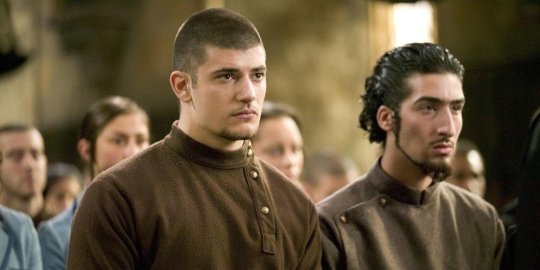
In spite of being one of the three largest schools on the European continent, with Hogwarts and Beauxbatons being the other two as claimed by Harry Potter Wiki, Durmstrang has a dark legacy that arguably makes it the worst in the Harry Potter world. Pronounced as ‘Doorm - strang’ despite what the spelling implies, this Eastern European school is so secretive that no one actually knows where it is.
This is largely due to the fact that those who visit Durmstrang “Must comply with memory charms to erase their knowledge of how they got there” Pottermore says. Durmstrang is also known for not admitting Muggle-Borns and having Dark Arts taught as a subject-matter, which ties into its history of being run by notorious wizards including a former Death Eater and having former students like Gellert Grindelwald.
NEXT: HARRY POTTER: 10 CHARACTERS WHO WERE FORGOTTEN AS THE MOVIES WENT ON
source https://screenrant.com/harry-potter-best-wizarding-schools-worst/
0 notes
Text
The Pioneering Female Botanist Who Sweetened a Nation and Saved a Valley
https://sciencespies.com/history/the-pioneering-female-botanist-who-sweetened-a-nation-and-saved-a-valley/
The Pioneering Female Botanist Who Sweetened a Nation and Saved a Valley

In 1970, the Indian government planned to flood 8.3 square kilometers of pristine evergreen tropical forest by building a hydroelectric plant to provide power and jobs to the state of Kerala. And they would have succeeded—if it weren’t for a burgeoning people’s science movement, buttressed by a pioneering female botanist. At 80 years old, Janaki Ammal used her status as a valued national scientist to call for the preservation of this rich hub of biodiversity. Today Silent Valley National Park in Kerala, India, stands as one of the last undisturbed swaths of forest in the country, bursting with lion-tailed macaques, endangered orchids and nearly 1,000 species of endemic flowering plants.
Sometimes called “the first Indian woman botanist,” Ammal leaves her mark in the pages of history as a talented plant scientist who developed several hybrid crop species still grown today, including varieties of sweet sugarcane that India could grow on its own lands instead of importing from abroad. Her memory is preserved in the delicate white magnolias named after her, and a newly developed, yellow-petaled rose hybrid that now blooms in her name. In her later years, she became a forceful advocate for the value and preservation of India’s native plants, earning recognition as a pioneer of indigenous approaches to the environment.
Edavaleth Kakkat Janaki Ammal was born in 1897, the tenth in a blended family of 19 brothers and sisters in Tellicherry (now Thalassery) in the Indian state of Kerala. Her father, a judge in a subordinate court system in Tellicherry, kept a garden in their home and wrote two books on birds in the North Malabar region of India. It was in this environment that Ammal found her affinity for the natural sciences, according to her niece, Geeta Doctor.
As she grew up, Ammal watched as many of her sisters wed through arranged marriages. When her turn came, she made a different choice. Ammal embarked on a life of scholarship over one of matrimony, obtaining a bachelor’s degree from Queen Mary’s College, Madras and an honors degree in botany from the Presidency College. It was rare for women to choose this route since women and girls were discouraged from higher education, both in India and internationally. In 1913, literacy among women in India was less than one percent, and fewer than 1,000 women in total were enrolled in school above tenth grade, writes historian of science Vinita Damodaran (and Ammal’s distant relative) in her article “Gender, Race, and Science in Twentieth-Century India.”
After graduating, Ammal taught for three years at the Women’s Christian College in Madras before receiving a unique opportunity: to study abroad for free through the Barbour Scholarship, established at the University of Michigan by philanthropist Levi Barbour in 1917 for Asian women to study in the U.S. She joined the botany department as Barbour Scholar at Michigan in 1924. Despite coming to America on a prestigious scholarship, Ammal, like other travelers from the East, was detained in Ellis Island until her immigration status was cleared, her niece writes. But mistaken for an Indian princess with her long dark hair and traditional dress of Indian silks, she was let through. When asked if she was in fact a princess, “I did not deny it,” she said.
During her time at the University of Michigan she focused on plant cytology, the study of genetic composition and patterns of gene expression in plants. She specialized in breeding interspecific hybrids (produced from plants of a different species) and intergeneric hybrids (plants of a different genera within the same family). In 1925, Ammal earned a Masters of Science. In 1931, she received her doctorate, becoming the first Indian woman to receive that degree in botany in the U.S.
Her expertise was of particular interest at the Imperial Sugar Cane Institute in Coimbatore, now the Sugarcane Breeding Institute. The Institute was trying to bolster India’s native sugarcane crop, the sweetest species of which (Saccharum officinarum) they had been importing from the island of Java. With Ammal’s help, the Institute was able to develop and sustain their own sweet sugarcane varieties rather than rely on imports from Indonesia, bolstering India’s sugarcane independence.
Ammal’s research into hybrids helped the Institute identify native plant varieties to cross-breed with Saccharum in order to produce a sugar cane crop better suited for India’s tropical environmental conditions. Ammal crossed dozens of plants to determine which Saccharum hybrids yielded higher sucrose content, providing a foundation for cross-breeding with consistent results for sweetness in home-grown sugarcane. In the process, she also developed several more hybrids from crossing various genera of grasses: Saccharum-Zea, Saccharum-Erianthus, Saccharum-Imperata and Saccharum-Sorghum.
In 1940, Ammal moved to Norfolk, England, to begin work at the John Innes Institute. There she worked closely with geneticist—and eugenicist—Cyril Dean Darlington. Darlington researched the ways that chromosomes influenced heredity, which eventually grew into an interest in eugenics, particularly the role of race in the inheritance of intelligence. With Ammal, however, he mostly worked on plants. After five years of collaboration, the pair coauthored the Chromosome Atlas of Cultivated Plants, which is still a key text for plant scientists today. Unlike other botanical atlases that focused on botanical classification, this atlas recorded the chromosome number of about 100,000 plants, providing knowledge about breeding and evolutionary patterns of botanical groups.
In 1946, the Royal Horticultural Society in Wisley offered Ammal a paid position as a cytologist. She left the John Innes Institute and became the Society’s first salaried woman staff member. There, she studied the botanical uses of colchicine, a medication that can double a plant’s chromosome number and result in larger and quicker-growing plants. One of the results of her investigations is the Magnolia kobus Janaki Ammal, a magnolia shrub with flowers of bright white petals and purple stamens. Though Ammal returned to India around 1950, the seeds she planted put down roots, and the world-renowned garden at Wisley still plays host to Ammal’s namesake every spring when it blooms.

A rose hybrid named in “E.K. Janaki Ammal” in honor of Ammal’s life and work.
(John Innes Centre U.K.)
When she returned to India in the early 1950s, she did so at the request of Jawaharlal Nehru, India’s first Prime Minister after their 1947 independence from British rule. India was recovering from a series of famines, including the Bengal famine of 1943 that killed millions. It was for this reason, Vinita Damodaran tells Smithsonian, that “Nehru was very keen to get [Ammal] back [to India] to improve the botanical base of Indian agriculture.” Nehru made her a government appointed supervisor in charge of directing the Central Botanical Laboratory in Lucknow. In this capacity, she would reorganize the Botanical Survey of India (BSI), originally established in 1890 under the oversight of Britain’s Kew Gardens to collect and survey India’s flora.
But Ammal found herself dissatisfied with some of the initiatives that the government had implemented to boost India’s food production. Under the 1940s Grow More Food Campaign, the government reclaimed 25 million acres of land for the cultivation of food, mostly grain and other cereals. “She found the deforestation was getting quite out of hand, quite rampant,” Damodaran says. Damodaran reads from a letter that Ammal sent to Darlington in which she expressed her distress over the extent to which deforestation was destroying India’s native plants: “I went 37 miles from Shillong in search of the only tree of Magnolia griffithii in that part of Assam and found that it had been burnt down.”
At this point, Ammal’s work took a decidedly different turn. After spending decades applying her skills to improving the commercial use of plants, she began using her influence to preserve indigenous plants under threat. One of Ammal’s goals for the botanical survey was to house plant specimens that had been collected from across the continent in an herbarium in India. She wanted the BSI to be conducted by Indian scientists and kept for India. But in the 60 years since the British first controlled the BSI, she found not much had changed when the government appointed a European, Hermenegild Santapau, as her director, a position that Damodaran says Ammal “felt had been unjustly denied her.”
In another letter to Darlington she expressed both anger and sadness at the decision to appoint Hermenegild. “I bring you news of a major defeat for botanical science in India,” she wrote. “The Govt. of India has appointed as the chief botanist of India—a man with the Kew tradition and I—the director of the Central Botanical Laboratory must now take orders from him … Kew has won … and we have lost.” Despite India’s independence from British rule, Britain’s colonization of the country manifested in science.
Ammal believed a truly systematic study of India’s flora could not be done if the specimens were collected by foreign botanists and then studied only in British herbaria. Damodaran explains, “This was critical to her: how do you create a revitalized botanical survey, in terms of both collection and research, that enables you to do this new flora?”
To that end Ammal issued a memorandum on the survey, writing, “The plants collected in India during the last thirty years have been chiefly by foreign botanists and often sponsored by institutions outside India. They are now found in various gardens and herbaria in Europe, so that modern research on the flora of India can be conducted more intensely outside India than within this country.”
This continues to be a problem today. “The largest collection of Indian plants are held there [at the Kew and the Natural History Museum],” Damodaran says, “It’s still quite an imperial institution.”
To preserve Indian plants, Ammal saw the need to value the indigenous knowledge about them. In 1955 she was the only woman to attend an international symposium in Chicago, ironically entitled Man’s Role in Changing the Face of the Earth. The Symposium interrogated the various ways that humans were changing the environment in order “to keep abreast of all the means at man’s disposal to affect deliberately or unconsciously the course of his own evolution.” In the room full of mostly white men, she spoke about India’s subsistence economy, the significance of tribal cultures and their cultivation of native plants, and the importance of Indian matrilineal traditions that valued women as managers of property, including a family’s plants—all of which were threatened by the mass-production of cereals.
“It is in this sense,” Damodaran writes, “that one can see Janaki Ammal as pioneering both indigenous and gendered environmental approaches to land use whilst continuing to be a leading national scientist.”
In the later years of her career, Ammal lent her voice to a booming environmental movement called Save Silent Valley, a campaign to stop a hydroelectric project that would flood the Silent Valley forests. By the time she joined protesters and activists, she was an established voice in Indian science, and a scientist emeritus at Madras University’s Centre for Advanced Studies in Botany. Joining the movement was a natural outgrowth of her previous decades of work, bringing full circle a scientific life of systematic study and a love of the natural wonders of her country. “I am about to start a daring feat,” she wrote, again to Darlington. “I have made up my mind to take a chromosome survey of the forest trees of the Silent Valley which is about to be made into a lake by letting in the waters of the river Kunthi.”
Harnessing her scientific expertise, she spearheaded the chromosomal survey of the Valley plants in an effort to preserve the botanical knowledge held there. As part of the larger movement, one of the most significant environmental movements of the 1970s, Ammal was successful: the government abandoned the project, and the forest was declared a national park on November 15, 1984. Unfortunately, Ammal was no longer around to see the triumph. She had died nine months earlier, at 87 years old.
In a 2015 article remembering her aunt, Greeta Doctor wrote that Ammal never liked to talk about herself. Rather, Ammal believed that “My work is what will survive.” She was right: though she is relatively unknown in her country, her story is out there, written in the pages of India’s natural landscape. From the sweetness of India’s sugar and the enduring biodiversity of the Silent Valley to Wiseley’s blooming magnolias, Ammal’s work does not just survive, it thrives.
#History
0 notes
Text
Exhibitors Honored at Chicago World’s Fair of Money®
The American Numismatic Association (ANA) presented 53 competitive exhibit awards at the 2019 World’s Fair of Money in Rosemont, Illinois. Winners were announced at the exhibit awards presentation and reception on Aug. 17.
Thirty-six exhibitors of all experience levels, showing 51 exhibits, competed in this year’s program. There were also five non-competitive individuals or clubs showing five additional exhibits.
Michael Kodysz received the Howland Wood Memorial Award for Best-of-Show for his exhibit “Virtus and Victoria: Coins Relating to the Severan War Against the Tribes of Caledonia.” The Radford Stearns Memorial Award for Excellence in Exhibiting, presented to the first and second runners-up, was awarded, respectively, to Robert A. Moon for “First Notes: A Selection of Serial Number 1 Notes from the First Sheets Issued by Several New York State National Banks,” and to Floyd A. Aprill for “The United States Mint in Manila.”
The ANA also presented competitive exhibit awards for young numismatists (YNs) age 17 and younger. The Charles H. Wolfe Sr. Memorial Award for the YN Best-of-Show exhibit was presented to Hayden Howard for “Money Marvels: Selected Superhero Coins.”
The Thos. H. Law Award for the best exhibit by a first-time exhibitor at the World’s Fair of Money also went to Michael Kodysz for his best-of-show exhibit.
The Rodger E. Hershey Memorial People’s Choice Award, selected by convention attendees, was won by Jeffrey Rosinia for “One Giant Leap…”
Rosinia also received the Women in Numismatics award for his exhibit “Feminism at the Fair: The Isabella Quarter: Women and the World’s Columbian Exposition.”
James Davis received the Derek Pobjoy Award for Best Exhibit of Modern Circulating Commemorative Coins for his exhibit “Exonumia of the Elgin, Illinois Coin Club.”
Mark Wieclaw received the Ira & Larry Goldberg Award for the best exhibit of “Coins that Made History” for “Irish ‘Gun’ Money 1689-1690 (A Complete Type Set).”
J. Eric Holcomb received the Joseph E. Boling Award for Judging Excellence.
2019 Class Exhibit Awards
Class 1: United States Coins, Lelan G. Rogers Memorial. All United States coins and patterns and all coinage or trade tokens used in pre-Federal America, except gold.
First place: Floyd A. Aprill, for “The United States Mint in Manila.”
Second place: Franklin L. Noel, for “A NEW CONSTELLATION: Nova Constellatio Coppers; Designs, Dates, and Die Varieties.”
Third place: Mark Wieclaw, for “An 1883-CC Dollar, the GSA and What Went Wrong?”
Class 2: United States Fiscal Paper, Sidney W. Smith/William Donlon Memorial. All paper money and bonds issued by the United States government, including military currency; pre-U.S. colonial, Continental, and Confederate paper money and bonds; state and private banknotes and bonds; scrip; college currency; and stock certificates. Essays, proofs, and souvenir cards of such items may also be shown.
First place: Robert A. Moon, for “First Notes: A Selection of Serial Number 1 Notes from the First Sheets Issued by Several New York State National Banks.”
Second place: Dale Lukanich, for “Two Ten Dollar Bills from The Citizens National Bank of Joliet, Illinois.”
Third place: Dan Freeland, for “Selected Michigan Nationals from Union City.”
Class 3 : Medals, Orders, Decorations and Badges; Burton Saxton/George Bauer Memorial. Medallic items not used as a medium of exchange, or not having trade value, including orders and decorations, convention badges, and badges issued by fraternal orders or other organizations. Excluded are Masonic pennies and tokens included in classes 5-8.
First place: Floyd A. Aprill, for “Selected Twentieth Century Medals of the United States Assay Commission.”
Second place: Pete Smith, for “A Public Display of Numismatic Awards.”
Third place: Donald H. Dool, for “La Sociedad ‘La Medalla’ Forty-one of the Forty-five medals Issued by this society.”
Class 4: Modern Coins and Medals, John R. Eshbach Memorial. Coins and medallic (non-denominated) material issued 1960 and later, including philatelic numismatic covers.
First place: J. Eric Holcomb, for “50 for 50: A Selection of Apollo 11 Medals.”
Second place: Jeffrey Rosinia, for “One Giant Leap…”
Third place: Billy Herrick, for “Commemorative World Coins with Multiple Dates That Include 1965: The World I Was Born Into.”
Class 5: Tokens, B.P. Wright Memorial. Items, including encased postage, issued as a medium of exchange for goods and services or for advertising purposes, but excluding American colonial items included in class 1. Includes Masonic pennies and substances used in lieu of metal.
No exhibits entered in this class.
Class 6: Casino Chips and Gaming Tokens, Archie A. Black Award. Items of all types and materials used as gaming pieces, including traditional and non-traditional tokens and other money substitutes, and including tokens used in military clubs.
No exhibits entered in this class.
Class 7: Engraved Coins, Love Token Society Award. Numismatic items that have been converted into jewelry, amulets, or decorative objects. Examples are love tokens, hobo nickels, and “pop-out” coins.
First place: Simcha Laib Kuritzky, for “Engraved Coins of the ‘Three Abrahamic Faiths.’”
Second place: Kathy Freeland, for “Connecting to the Past—Love Token Bracelets From the 1800s.”
Third place: Judy Schwan, for “Baghdad Shilling News.”
Class 8: Elongated Coins, Dottie Dow Memorial. Souvenirs created using an elongating machine, whether the underlying piece is a coin, token, medal, or blank planchet.
First place: Simcha Laib Kuritzky for “Feline Elongated Type Set.”
Second place: Cindy Calhoun, for “Apollo Space Mission Elongateds by Earl Anderson.”
Third place: Cindy Calhoun, for “The First of Many Wonderful Elongated Coins…Don Adams’ Start as an Elongated Designer and Roller.”
Class 9: Coins Issued Prior to 1500 A.D., Dr. Charles W. Crowe Memorial. Coins, including gold, issued by any government before 1500 A.D.
First place: Michael Kodysz, for “Virtus and Victoria: Coins Relating to the Severan War Against the Tribes of Caledonia.”
Second place: Michael T. Shutterly, for “Shining Lights in a Dark Age.”
Third place: Donald H. Dool, for “AD Dated Copper Coins of the Fifteenth Century.”
Class 10: Regional U.S. Numismatics, William C. Henderson/Fred Cihon Memorial. Numismatic material of any type specific to a particular region of the United States, such as the locale where the exhibit is being presented.
First place: Floyd A. Aprill, for “Milwaukee St. Patrick’s Day Parade—Award & Commemorative Medals.”
Second place: Dave Holladay, for “Select Items From Connecticut’s 1935 Tercentenary.”
Third place: George Cuhaj, for “Medallic Tributes for George Cardinal Mundelein, Archbishop of Chicago.”
Class 11: Numismatics of the Americas, Henry Christensen/John Jay Pittman Sr. Memorial. Numismatic material of any type issued or used in the Western Hemisphere outside the United States.
First place: Donald H. Dool, for “Nineteenth Century Latin American Scripophily: Stocks, Bonds and other monetary instruments issued in Latin American Cities.”
Second place: no exhibit
Third place: no exhibit
Class 12: Numismatics of Europe, John S. Davenport Memorial. Numismatic material of any type issued or used in Europe, including Russia east to the Urals.
First place: Mark Wieclaw, for “Irish ‘Gun’ Money 1689-1690 (A Complete Type Set).”
Second place: Michael T. Shutterly, for “Vive Le Franc!”
Third place: Gerald Grzenda for “Coinage of the German Democratic Republic.”
Class 13: Numismatics of Africa and the Middle East, Menachem Chaim and Simcha Tova Mizel Memorial. Numismatic material of any type issued or used on the continent of Africa and in the Middle East (from Turkey east through Iran and south to Aden).
First place: Simcha Laib Kuritzky for “Henrietta Szold and Her Legacy: Hadassah and Youth Aliyah.”
Second place: no exhibit
Third place: no exhibit
Class 14: Numismatics of Asia and the Pacific, William B. Warden Jr. Memorial. All numismatic material issued, used in, or related to Asia east of the Urals and Iran, and in the southeast Asian, Australasian, and Pacific islands (excluding Hawaii under the U.S.).
First place: Floyd A. Aprill, for “U.S. Philippines Half Centavos (1903-1908).”
Second place: Dr. Sunil Richardson for “Elephant Copper Dumps—The Link To Mysore’s Tipu Sultan and British Ceylon.”
Third place: Hayden Howard, for “Money Marvels: Selected Superhero Coins.”
Class 15: Gold Coins, Gaston DiBello/Melvin and Leona Kohl Memorial. Gold coins of any provenance and era.
First place: Erwin E. Brauer, for “1795-1933 Major Design Types of Regular Issue American Gold Coins.”
Second place: Simcha Laib Kuritzky, for “Israel’s Two-Decade Long Road to Standardized Gold Coinage.”
Third place: Kevin Dailey, for “Gold Coins of the Mint’s Golden Girl.”
Class 16: Numismatic Errors and Error Varieties, Numismatic Error Collectors Award. Any numismatic material mis-struck or misprinted by the producer, including varieties caused by die or plate deterioration or damage. Items mutilated or altered after production are excluded.
No exhibits entered in this class.
Class 17: Numismatic Literature, Aaron Feldman Memorial. Printed and manuscript (published or unpublished) literature dealing with any numismatic subject.
First place: Michael T. Shutterly for “Buy the Books for the Coin.”
Second place: Marc Charles Ricard, for “The Numismatic Literature of Napoleonic Medals.
Third place: no exhibit
Class 18: General, Specialized, and Topical, Robert Hendershott Memorial. Numismatic material not covered in other classes or covered by more than one class. Includes wooden money, political buttons and insignia, and other exonumia, as well as media of exchange used in carrying out purchases and business transactions by primitive people and later by others as they progressed from barter to coins, or other items generally accepted as primitive or odd and curious currencies. Also includes exhibits showing material linked by design, such as elephants or bridges, or by theme, such as a world’s fair.
First place: Erwin E. Brauer, for “A Tribute Display of Unique & Rare Collectibles to Honor A Fine Lady, A Special exhibit of Selected, Favorite Highlights, From the Numismatic Spectrum.”
Second place: Lawrence Sekulich, for “The Numismatic Chronicles of Medusa.”
Third place: Fred Schwan, for “Those Daring Young Men in their Flying Machines.”
Class 19: Convention Theme, Clifford Mishler Award. Numismatic items of any type that, together with the exhibit text, illustrate the announced theme for the convention at which the exhibit is shown. The 2019 convention theme is “Chicago: Crossroads for Culture and Progress.”
First place: Russ Frank, for “The Capital Stock of the World’s Columbian Exposition.”
Second place: Jeffrey Rosinia, for “Feminism at the Fair: The Isabella Quarter: Women and the World’s Columbian Exposition.”
Third place: Terri Ventresca, for “A Selection of Elongated Pennies and Postcards: Scenes of the 1933 Chicago World’s Fair.”
Class 20: U.S. Commemorative Coinage, Society for U.S. Commemorative Coins Award. Material of any type or period related to United States commemorative coinage and to the events being commemorated.
No exhibits entered in this class.
Class 21: Emeritus, Barry Stuppler Award. Exhibits by individuals not otherwise eligible to exhibit competitively or exhibits that have won best-of-show or twice won in class competition at the World’s Fair of Money. Any other exhibit may also be entered at the exhibitor’s option. The winner of this class does not advance to best-of-show judging.
No exhibits entered in this class.
2019 Young Numismatist Exhibit Awards
Class Y1: United States Coins, Edgerton-Lenker Memorial. All United States coins and patterns and all coinage or trade tokens used in pre-federal America.
No exhibits entered in this class.
Class Y2: World Coins, James L. Betton Memorial. Coins issued 1500 A.D. or later in any foreign country.
First place: Hills Howard IV for “Selected Famous European Train Coins.”
Second place: no exhibit
Third place: no exhibit
Class Y3: Paper Money, Kagin Family Award. Paper money and paper numismatica of all types, issued in any country.
No exhibits entered in this class.
Class Y4: Israeli or Judaic, J.J. Van Grover Memorial. Israeli or Judaic numismatic material of all types. In the event no exhibits qualify, the award may be presented to another deserving exhibit.
No exhibits entered in this class.
Class Y5: Medals and Tokens, Charles “Cheech” Litman Memorial. Medals and tokens of all countries. In the event no exhibits qualify, the award may be presented to another deserving exhibit.
First place: Hayden Howard, for “Money Marvels: Selected Superhero Coins.”
Second place: no exhibit
Third Place: no exhibit
Class Y6: Medieval and Ancient, Charles H. Wolfe Sr. Memorial. All numismatic material issued prior to 1500 A.D.
No exhibits entered in this class.
Class Y7: Errors and Varieties, Alan Herbert Memorial. Any numismatic material mis-struck or misprinted by the producer, including varieties caused by die or plate deterioration or damage. Excluded are items mutilated or altered after production. In the event no exhibits qualify, the award may be presented to another deserving exhibit.
No exhibits this year.
The American Numismatic Association is a congressionally chartered nonprofit educational organization dedicated to encouraging people to study and collect money and related items. The ANA helps its 25,000 members and the public discover and explore the world of money through its vast array of educational and outreach programs, as well as its museum, library, publications, conventions, and seminars. For more information call 719-632-2646 or visit www.money.org.
The post Exhibitors Honored at Chicago World’s Fair of Money® appeared first on Numismatic News.
0 notes
Text
June is Caribbean American Heritage Month
We all know that just over 600 years ago, Italian explorer Christopher Columbus (Cristofero Colombo) petitioned the queen of Spain for three ships to sail west on the Atlantic Ocean in search of India. Instead, he landed on the island of Hispaniola, whose original native Taino name might have been Quizqueya (supposedly "Mother of all Lands").
1775 --- A Mulatto Woman and her White Daughter Visited by Negro Women at their House in Martinique... by Le Masurier --- Image by © The Gallery Collection/Corbis
From the moment of Columbus’s report, colonizers from across Europe began to settle up and down the New World, including the larger American continents and the many islands in the Caribbean Sea. Several of these colonizers would also bring millions of enslaved African people over the course of several hundred years. The onslaught of foreign bodies onto the already-inhabited islands led to countless deaths, from war, illness, or overpopulation and starvation—and in some cases the colonizers enslaved the original inhabitants.
Over the centuries, the appearance of the Caribbean islands would change, and those claiming power over them would as well. Some island nations would gain independence, often through violent revolution. Others would continue to live with foreign nations—sometimes a full ocean away—holding sovereignty over them.
Over the course of the twentieth century, the United States would become one of those sovereign nations; closer than Europe, but still far enough away that the islands under its control could easily become an afterthought. The draw of Imperialism was too strong for the US, especially as we continued to reap the benefits of Manifest Destiny. But one benefit to this change in power is the geographic movement that was now possible for Caribbean people.
American Citizens in and from the Caribbean
If you’ve seen West Side Story, you might have an inkling of the influx of Caribbean Americans making the decision to move to the continental US. In many cases, these were people who weren’t technically “immigrants”; they were US citizens taking the opportunity to move to a different place. Americans from Puerto Rico, The US Virgin Islands, St. Croix, St. Thomas, and St. John claim US citizenship whether they live on those islands or in the US.
Immigration from other Caribbean Nations
Whether from wealthier or poorer nations, many people from independent and sovereign nations have made the choice to move to the US, whether for careers, education, or simply a change of scene. Others have sought out differing perspectives on legal rights and social justice. As one of the nearest developed country with many different options for city, state, and both real and social climate, the United States marked a logical place to move.
Caribbean Heritage in the United States
Since long before the United States was a country, people from the Caribbean Islands have moved here to start families and legacies. If you’re a fan of either history or musicals, you know that Alexander Hamilton was born and raised in Nevis, a small island off the coast of Saint Kitts. Countless more people through the history of the United States, whether of European, African, Hispanic, or Indigenous descent, have made an impact on the US, small and large. From national legislature to music and food, the evolution of the Caribbean has influenced the United States for the better.
Now if only we could view the islands there as more than a combination of cruise destinations and dark islands full of black and brown dictators.
Want to read more? Check out these books and other resources about the Caribbean and Caribbean-American people.
Click on an island or island name to read about it in CultureGrams.
Try some of these documentary films and movies on Kanopy.
Island People
Empire's Crossroads
American Empire
And how about some fun books by and about Caribbean-American people?
Uptown Thief
This Kid Can Fly
Forest World
Sister Outsider
Annie John
Breath, Eyes, Memory
Hamilton
June is Caribbean American Heritage Month published first on https://medium.com/@SteampunkPCGames
0 notes
Quote
'Europe is not a geographical entity,' commented Hitler in August 1941. 'It is a racial entity.' The League of Nations had tried to keep minorities where they were, and ensure stability through international law; Hitler, in contrast, had no faith in law and aimed to ensure stability by uprooting peoples.
Dark Continent: Europe’s Twentieth Century

0 notes
Text
THE GRAND BUDAPEST HOTEL
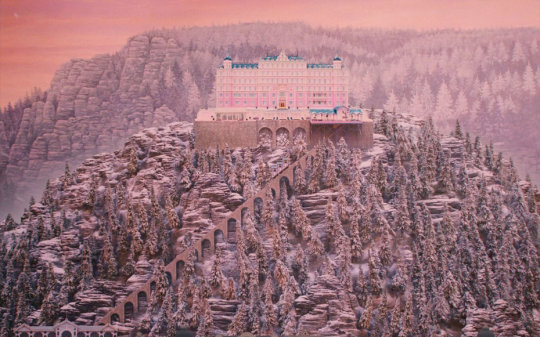
Giving up on this whole idea of the Andersons being brothers, letting the joke die, that’s not half-arsed. That’s not realising it’s a bit of a one note joke, and slowly giving it up in the face of cinematic masterpiece after cinematic masterpiece making you a bit ashamed. It’s not getting to sad to carry it on every time Philip Seymour Hoffmann appears, from Hard Eight, to that post-awful OD entrance in Boogie Nights, to the sad angel he’d become in Magnolia. It’s not that. Giving up on the joke is a brilliantly clever meta parable for Wes Anderson’s work. Because everything’s serious now.
At first glance Grand Budapest Hotel looks like a lot of Wes’ others; the minutiae of design, the wide cast of eccentric characters, the development of a closed-off world. There’s plenty of great performances from old hands and a class new class of Saoirse Ronan, Tony Revolori and a wonderful Ralph Fiennes, finally finding in Anderson’s words a likeability that’s evaded his career up to this point. His Monsieur Gustave is a great, lost man from another time, a totem of the charm, warmth and decency that’s long been the hallmark of Anderson’s films. The design work’s impeccable. There’s a lot of cake. But The Grand Budapest Hotel is Wes Anderson’s masterpiece because it’s the one where his closed off world meets reality.
It looked like simple history in 2014. A period piece, a remembrance. But the director was obviously paying attention: just two years later, in the blink of an eye, as Fascism, ignorance and intolerance infest their way across the interwebs, institutions and voting booths, the movie looks like a plea, an echo from a time already gone. That it’s so funny, sweet and fresh adds to the heartache; by setting his lovely story full of lovely people within a story within another story Anderson reminds us of the importance of remembrance itself, of one reader under a statue of a dead author, reading his autobiography on the tale he retold long ago. It’s about how this decency won’t ever be buried, as long as there’s someone left to read.
The mix of sweet and horrific makes it pretty bleak, especially for Anderson. People die. Cats are thrown out of windows. People age. But it all comes back to that death of decency again, of a mourning for a lost world; Anderson was heavily inspired by the work of Stefan Zweig, a popular Austrian author of the first half of the twentieth century. Zweig wrote biographies, essays, novellas, criticised as lightweight by some, praised as simplistic by others. In 1942 he and his wife held hands and died of a barbiturate overdose, unable to get past the horrors of the German Reich they were living in. Anderson says that many things in Grand Budapest Hotel are inspired by Zweig – the characters of the authors and M. Gustave, the idea of a story within a story within a story. But as an entire film it also takes on the ideals and dimensions of its inspiration’s dreams; Zweig was an avid collector of curios from around Europe, collecting them all together in a cabinet that served as a microcosm of the continent being blown to hell around him. It’s easy to see Anderson’s film as that same cabinet, a celluloid sanctuary for a world lost, destroyed by the borders that sprung up so easily in real life, the controls and despotism that dominate the final third of the film. Lost romance. A single painting. An assortment of wonderful tasting confectionaries. As the past two years have gone by this tribute to a man and an age of decency has grown larger, into an example of a world lost to darkness and totalitarianism, the same way ours is going with every new horror. But we’re not The Grand Budapest Hotel, duh, we’re not a film. We’re not Stefan Zweig, unable to see an end to the darkness, because we’ve lived in the light he never saw. We’ll see it again.
Trailer
D
#the grand budapest hotel#ralph fiennes#saiorse ronan#tony revolori#tilda swinton#bill murray#wes anderson#the magnificent andersons#adrian brody#owen wilson#jeff goldblum#harvey keitel#willem dafoe#D#movie review#cinema review#film review#film#movie#cinema#cinema blog#movie blog#film blog
0 notes